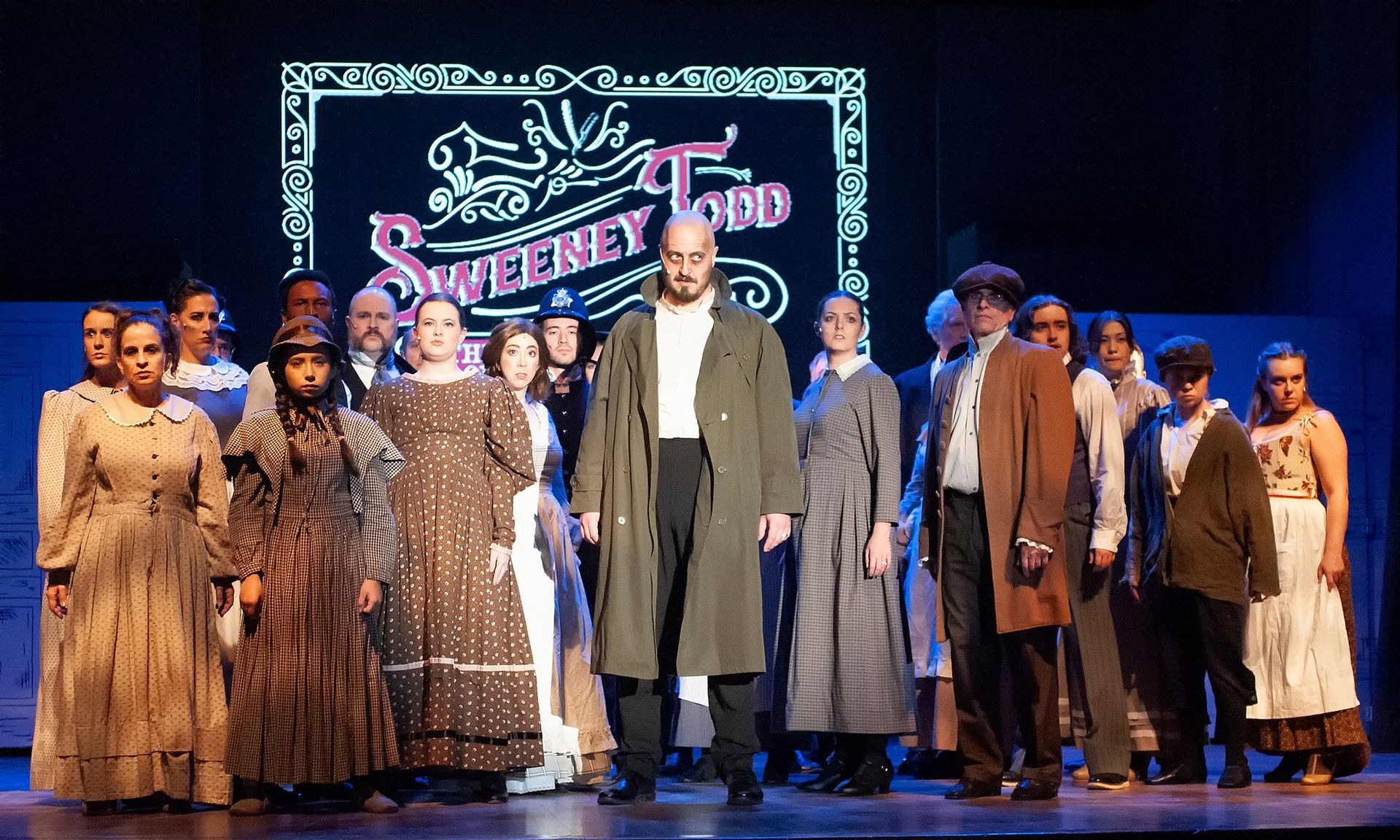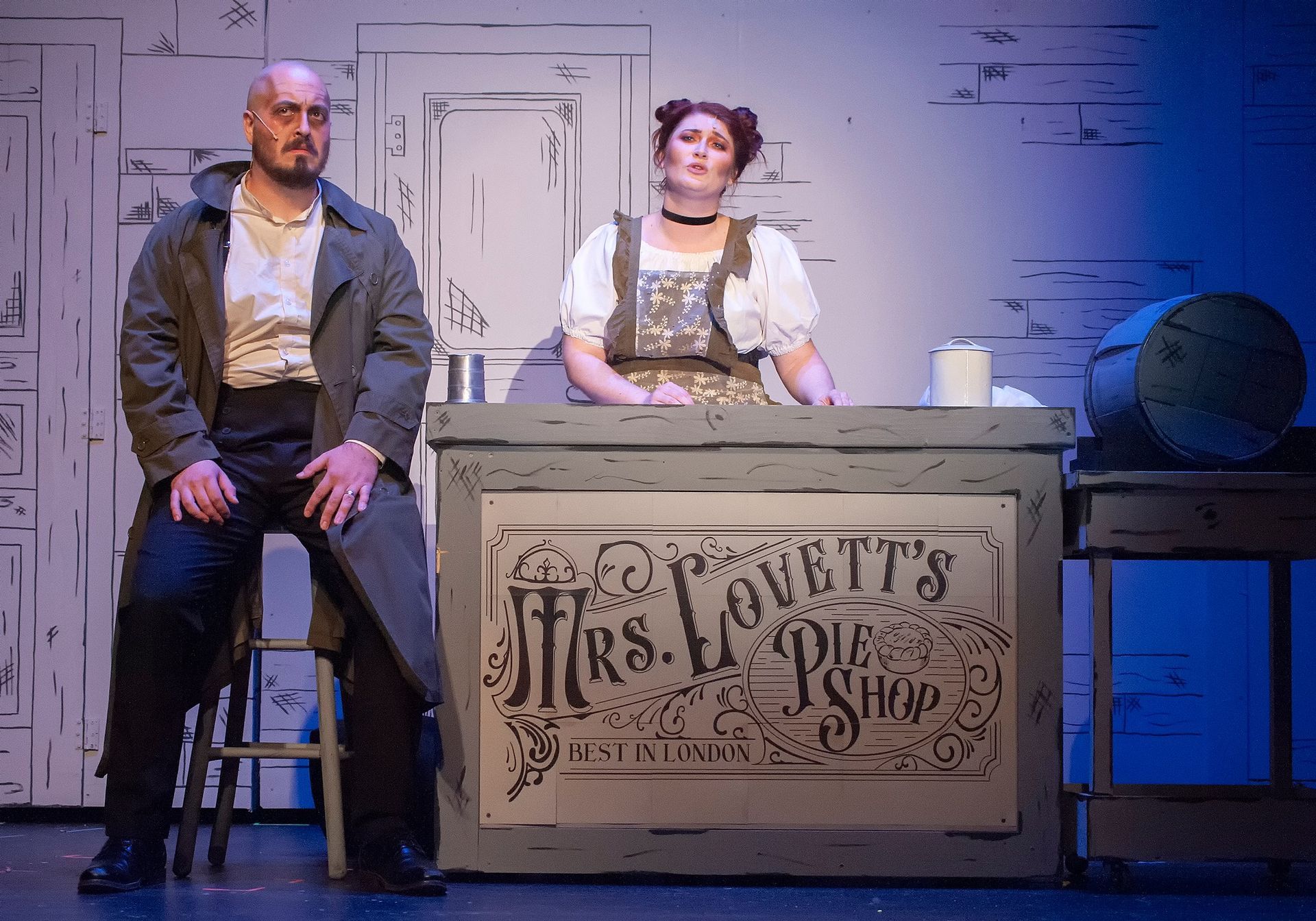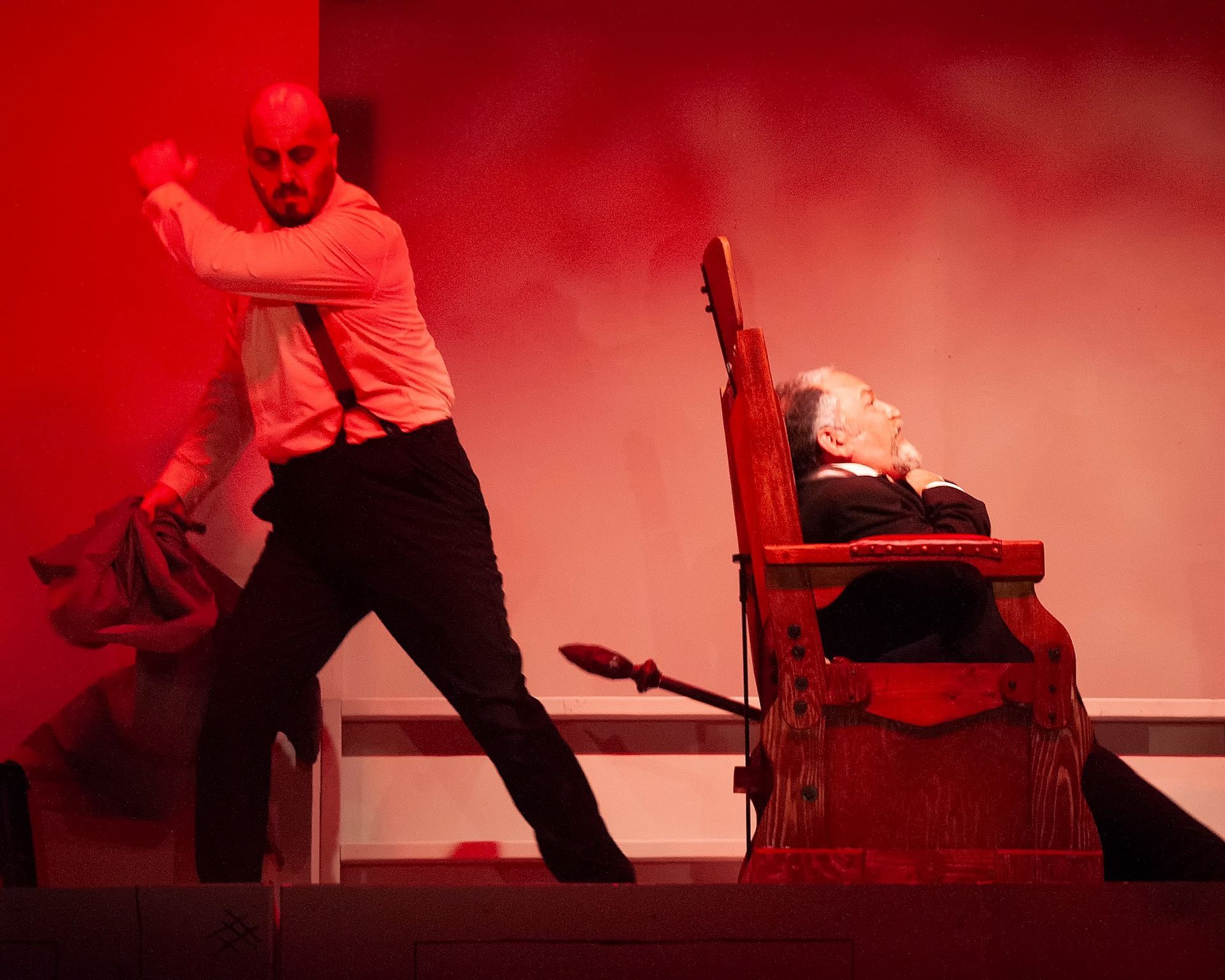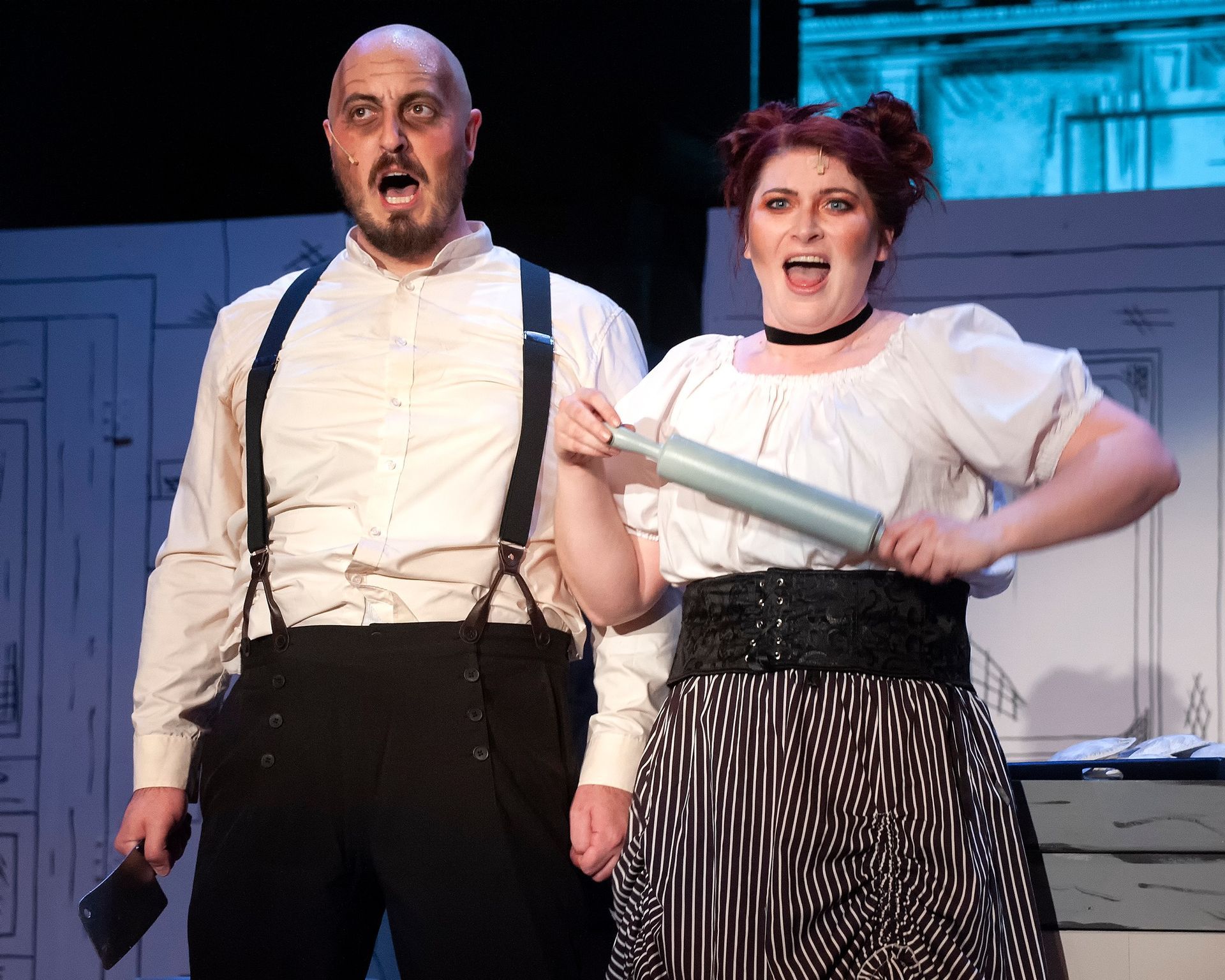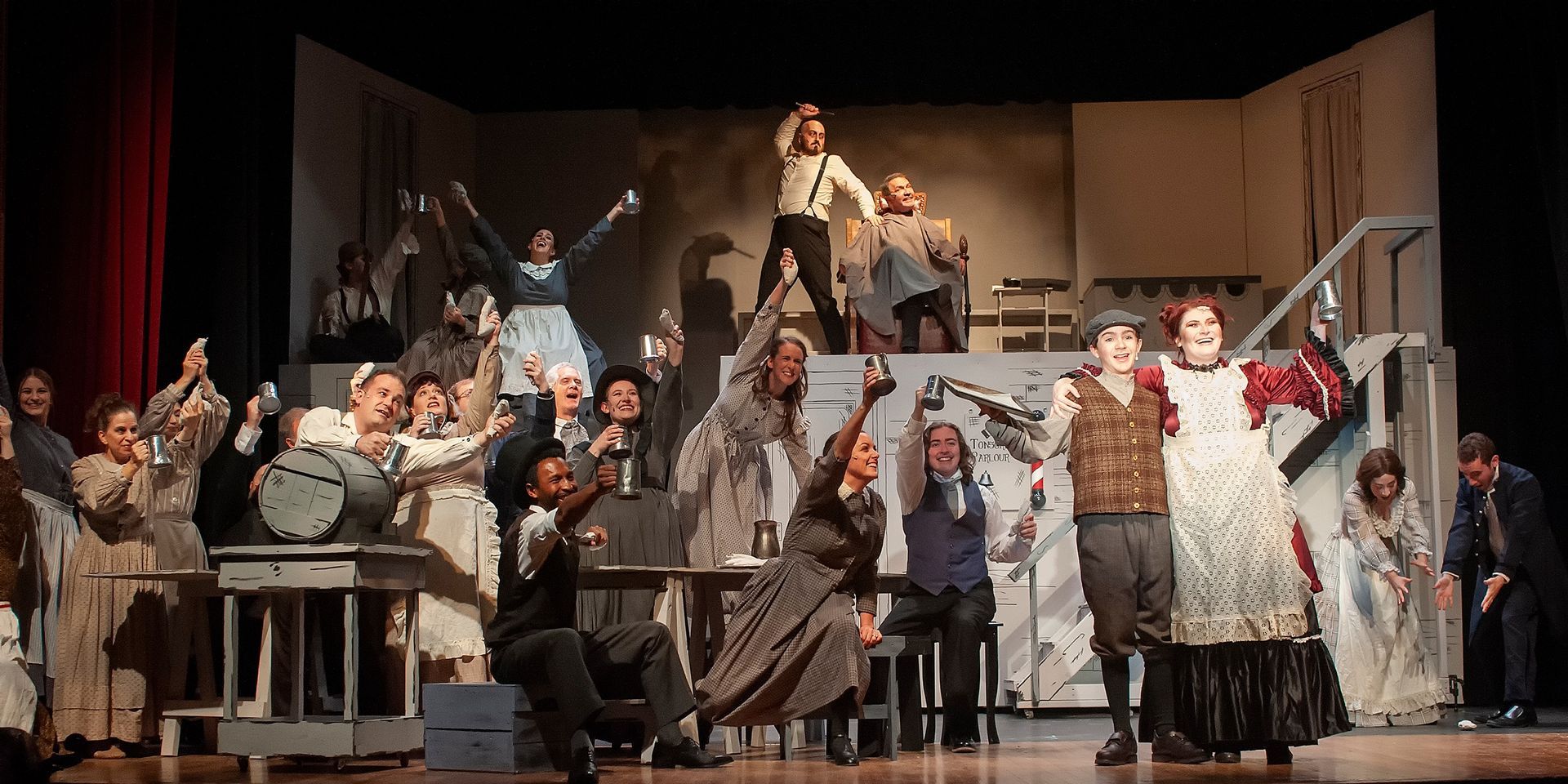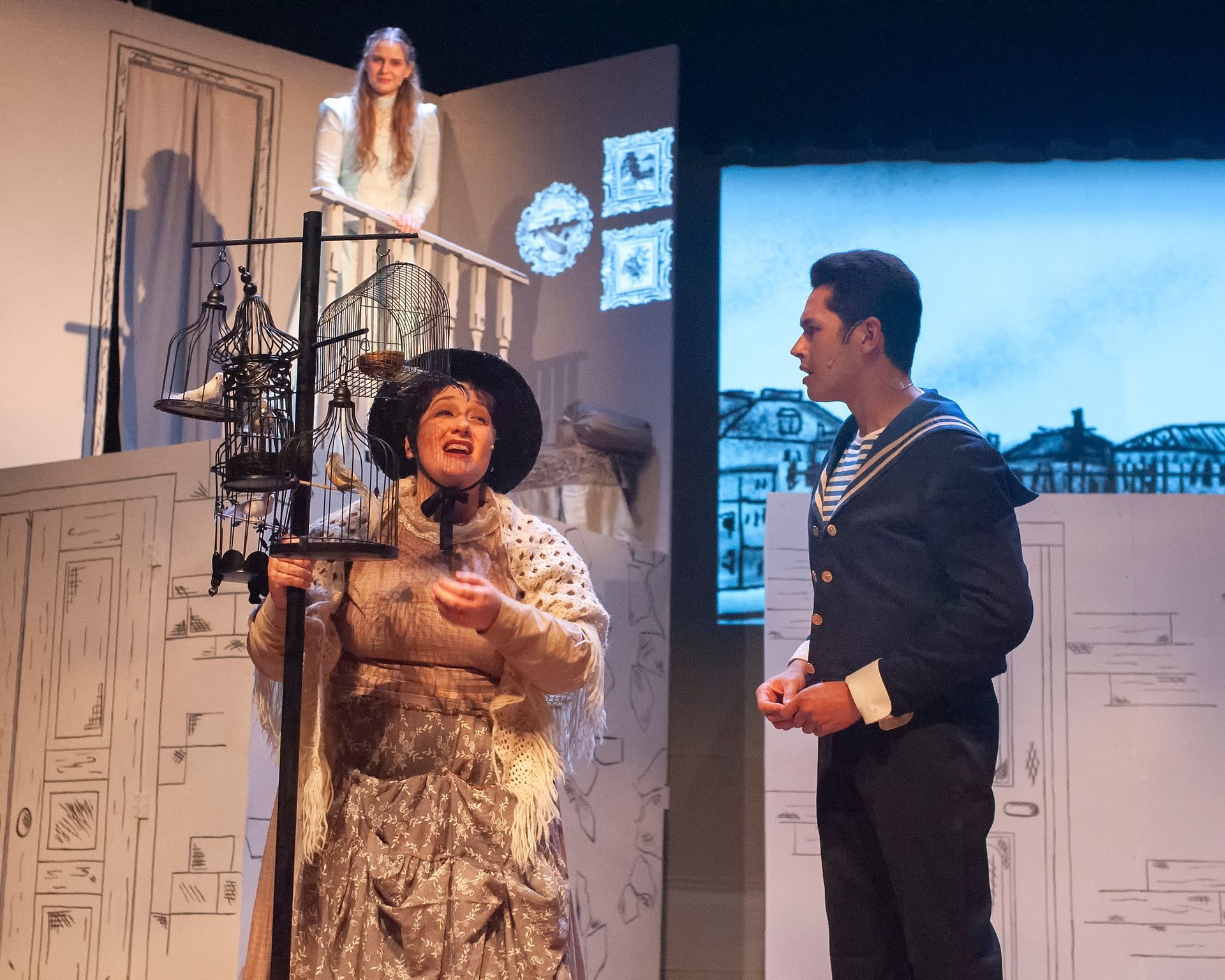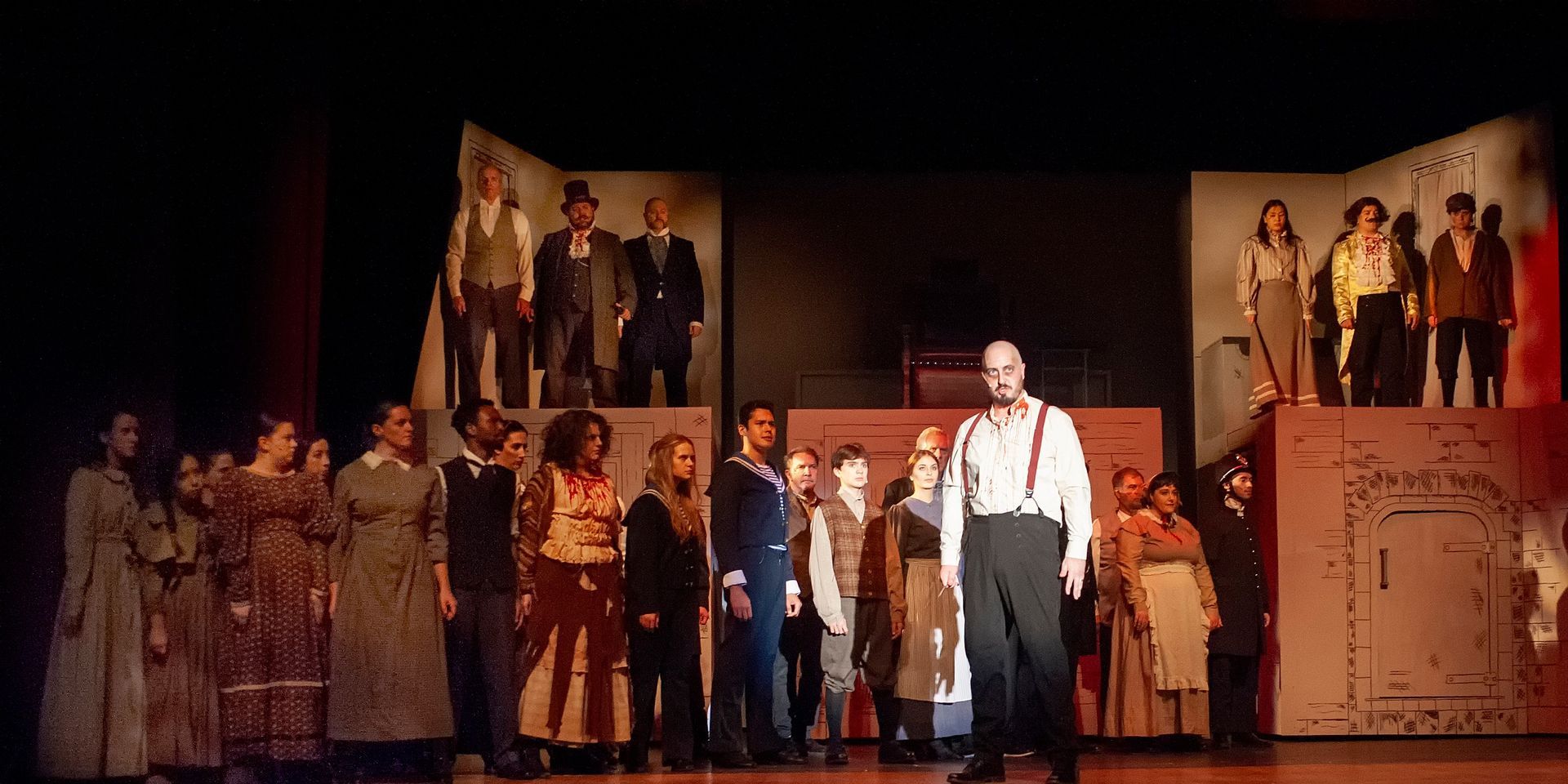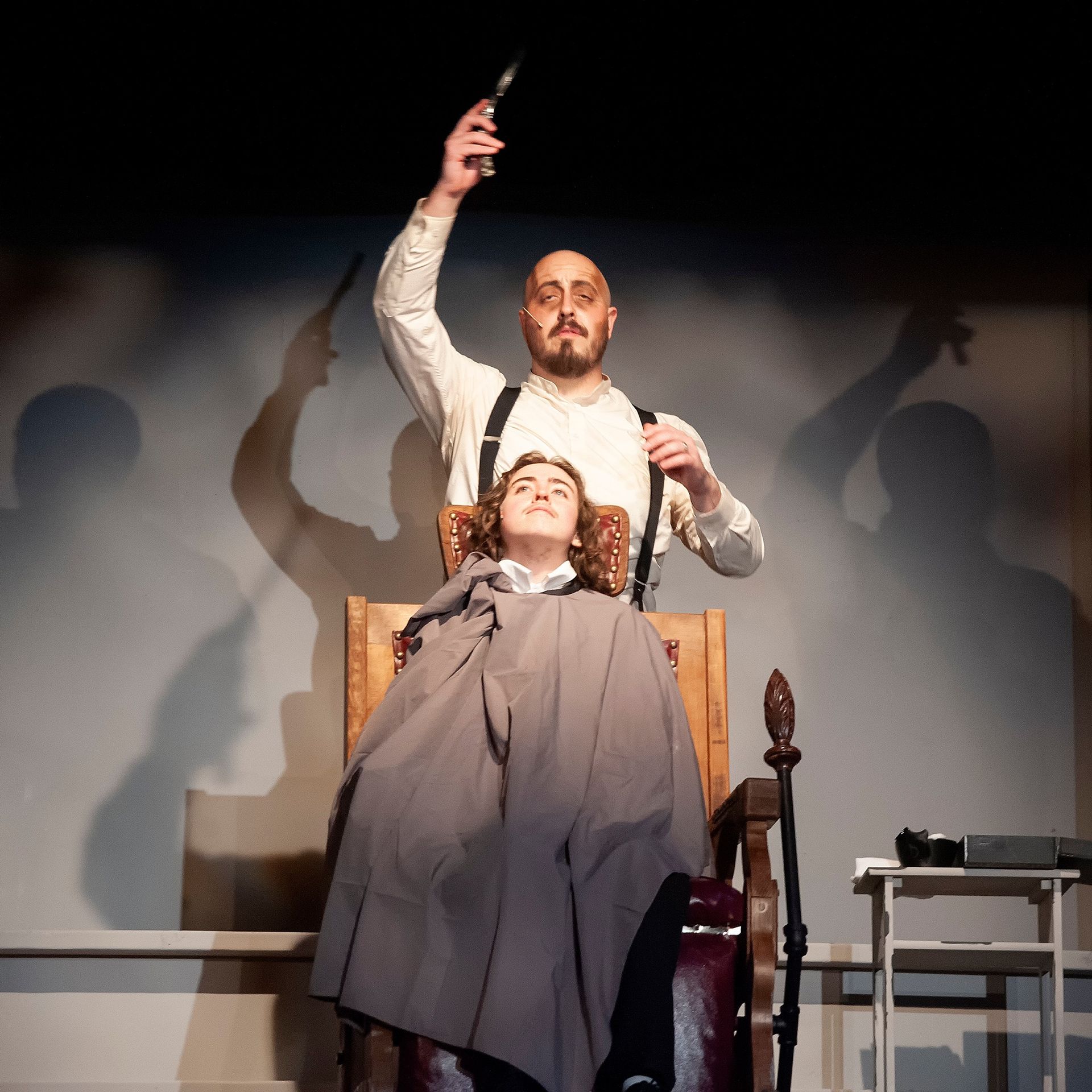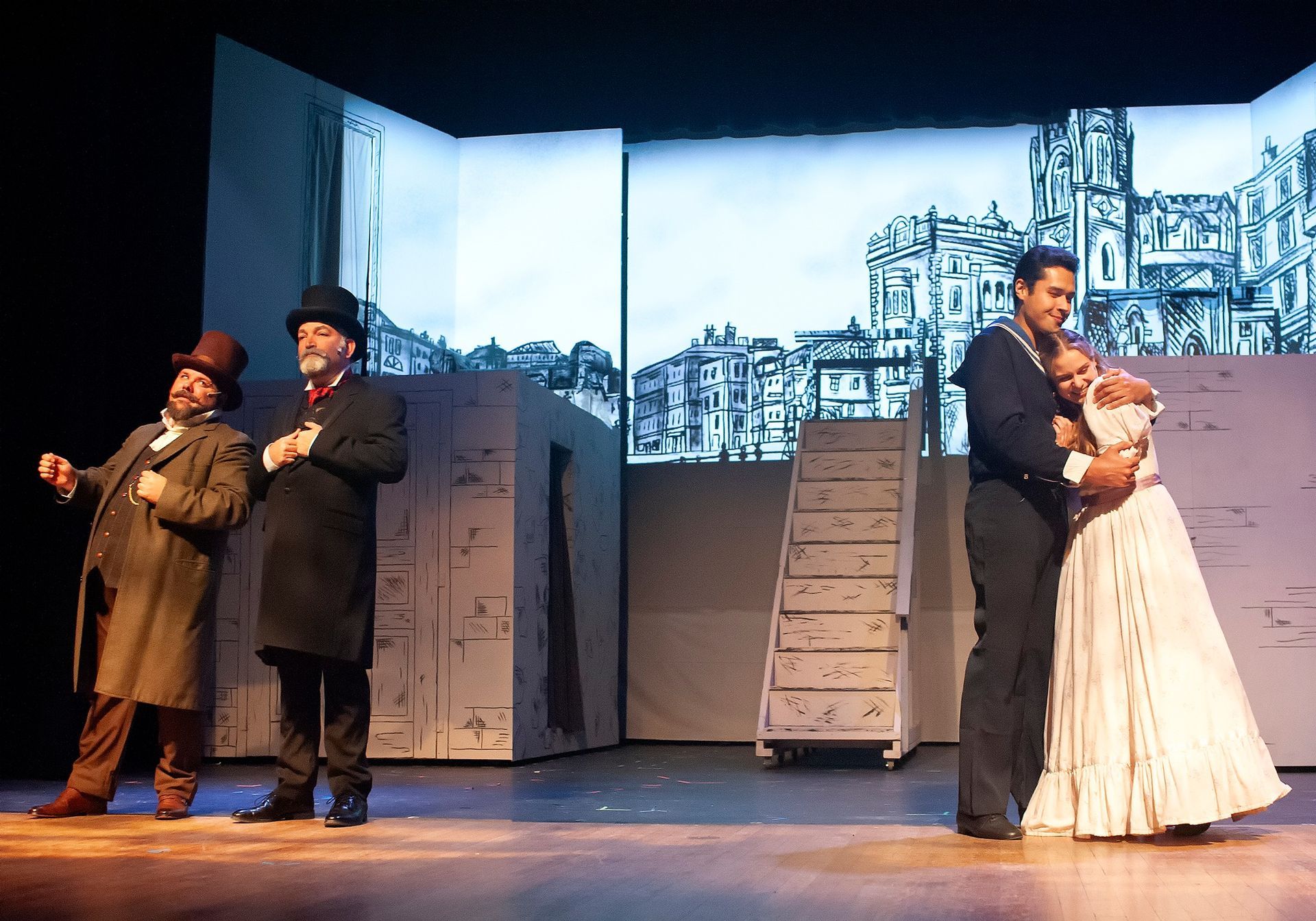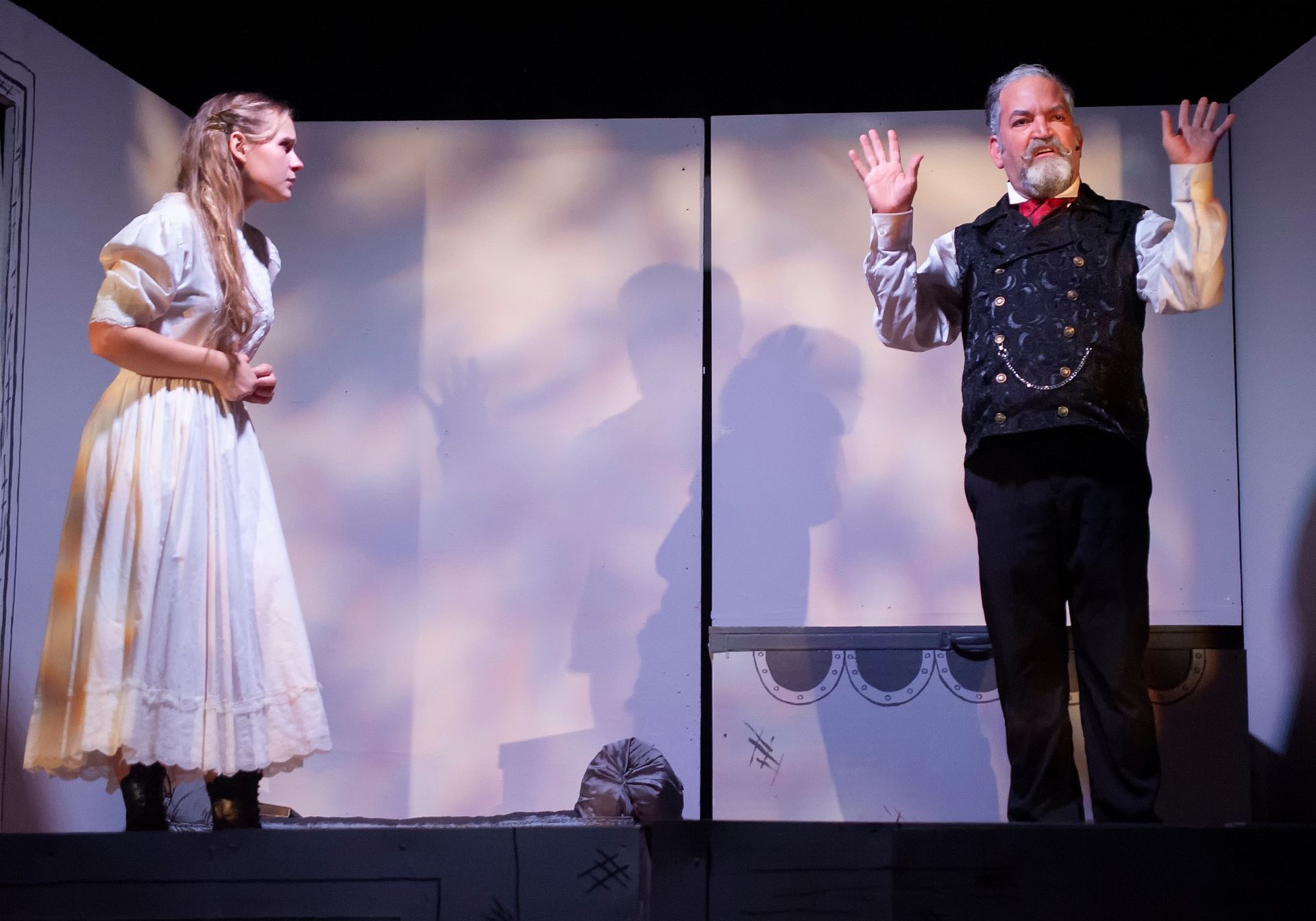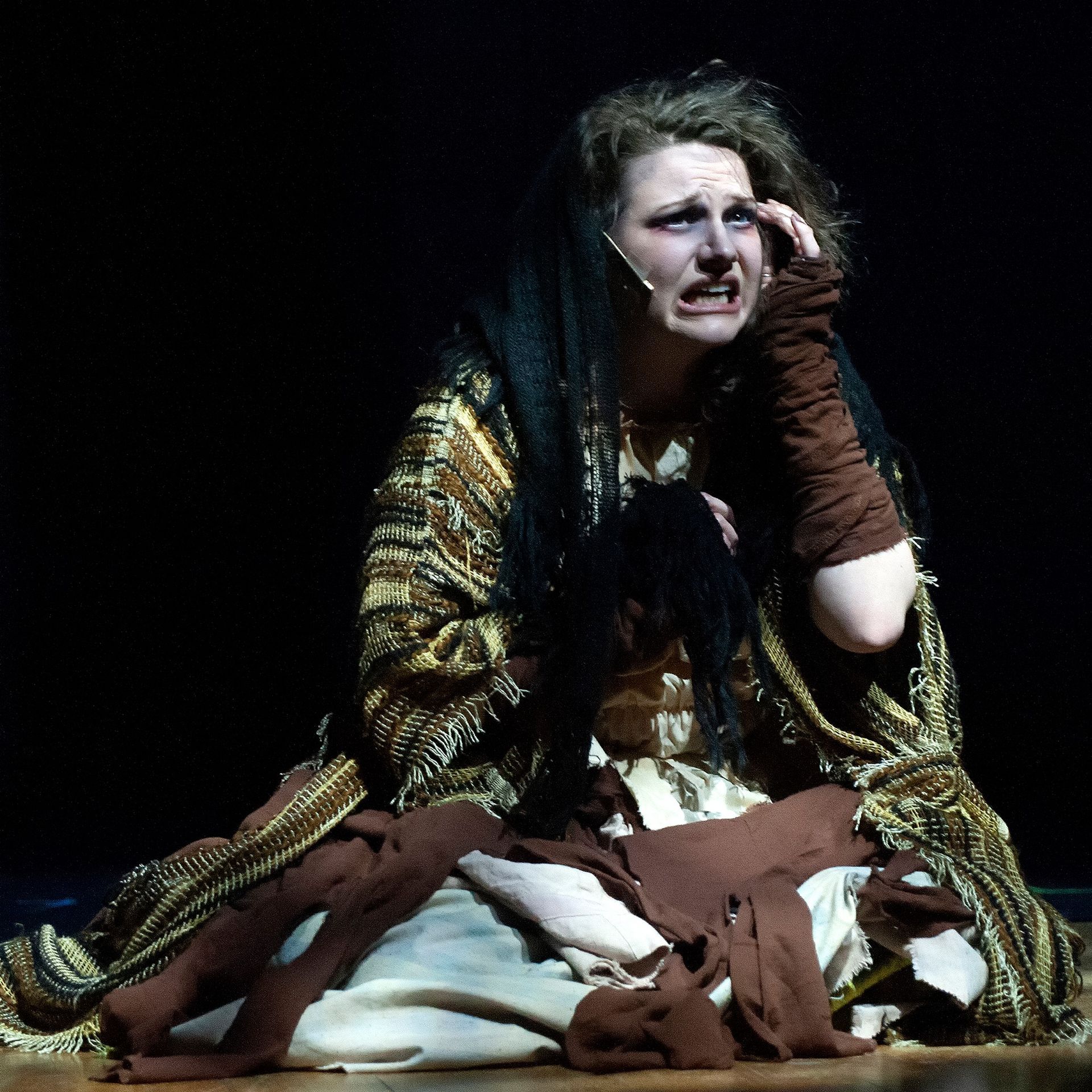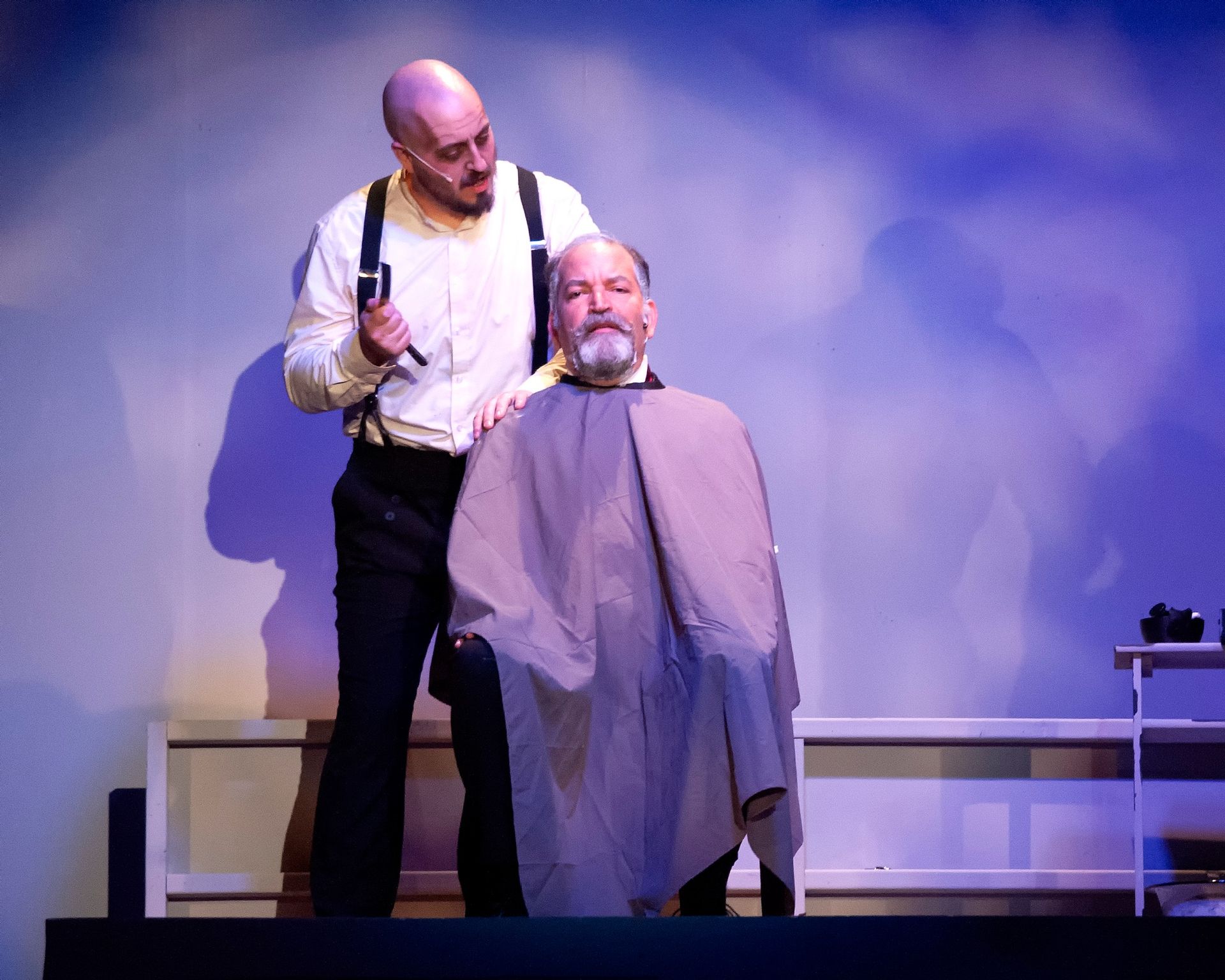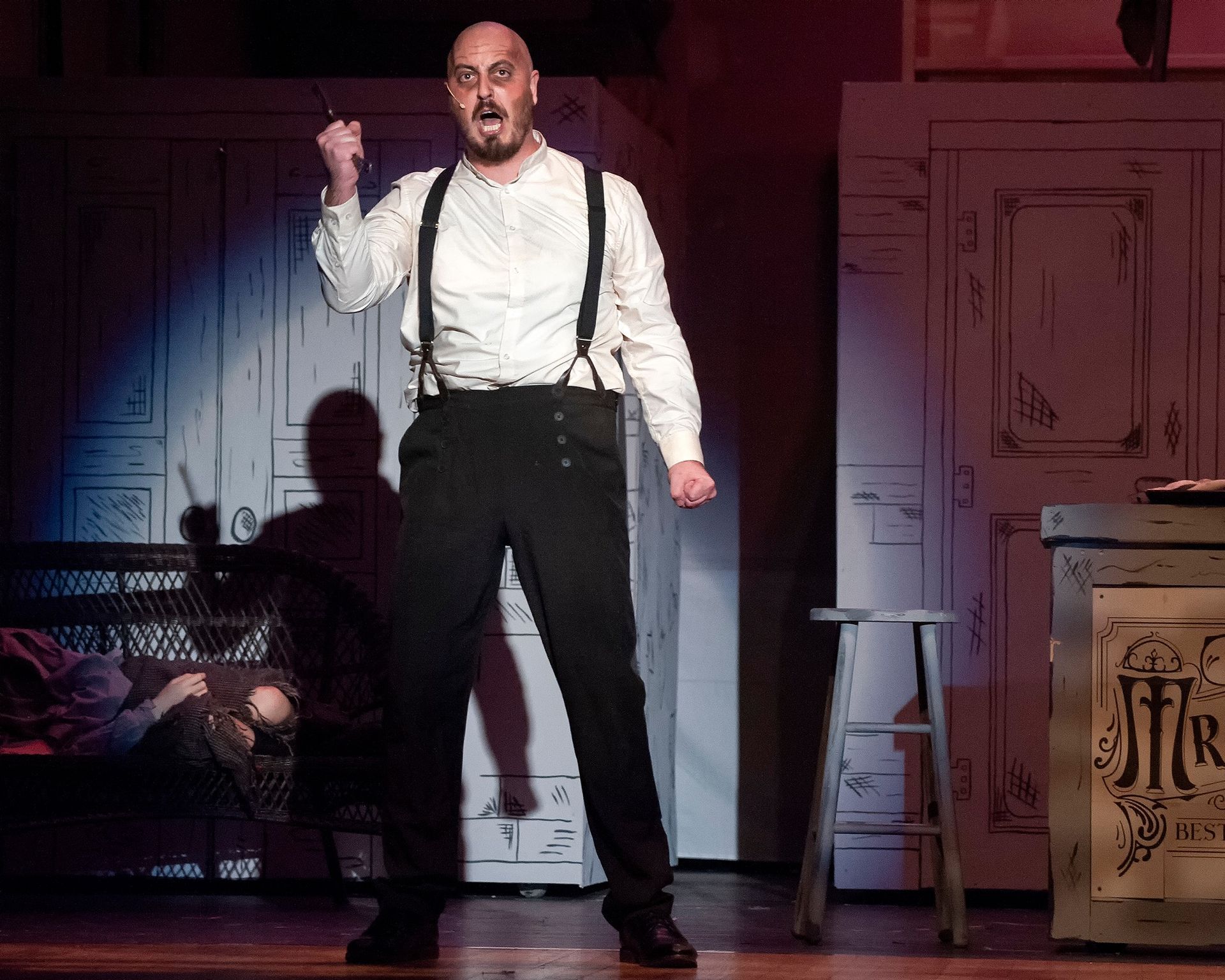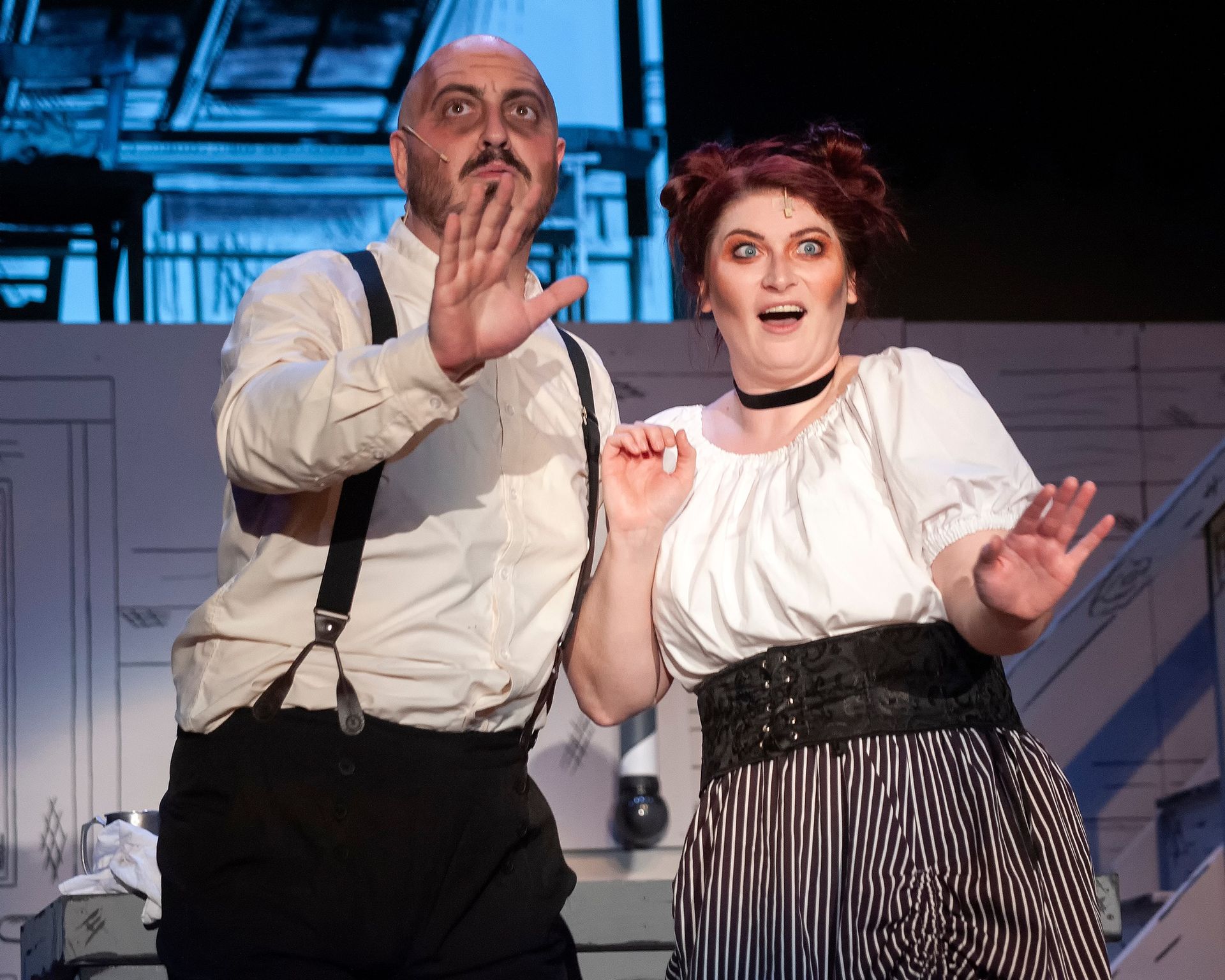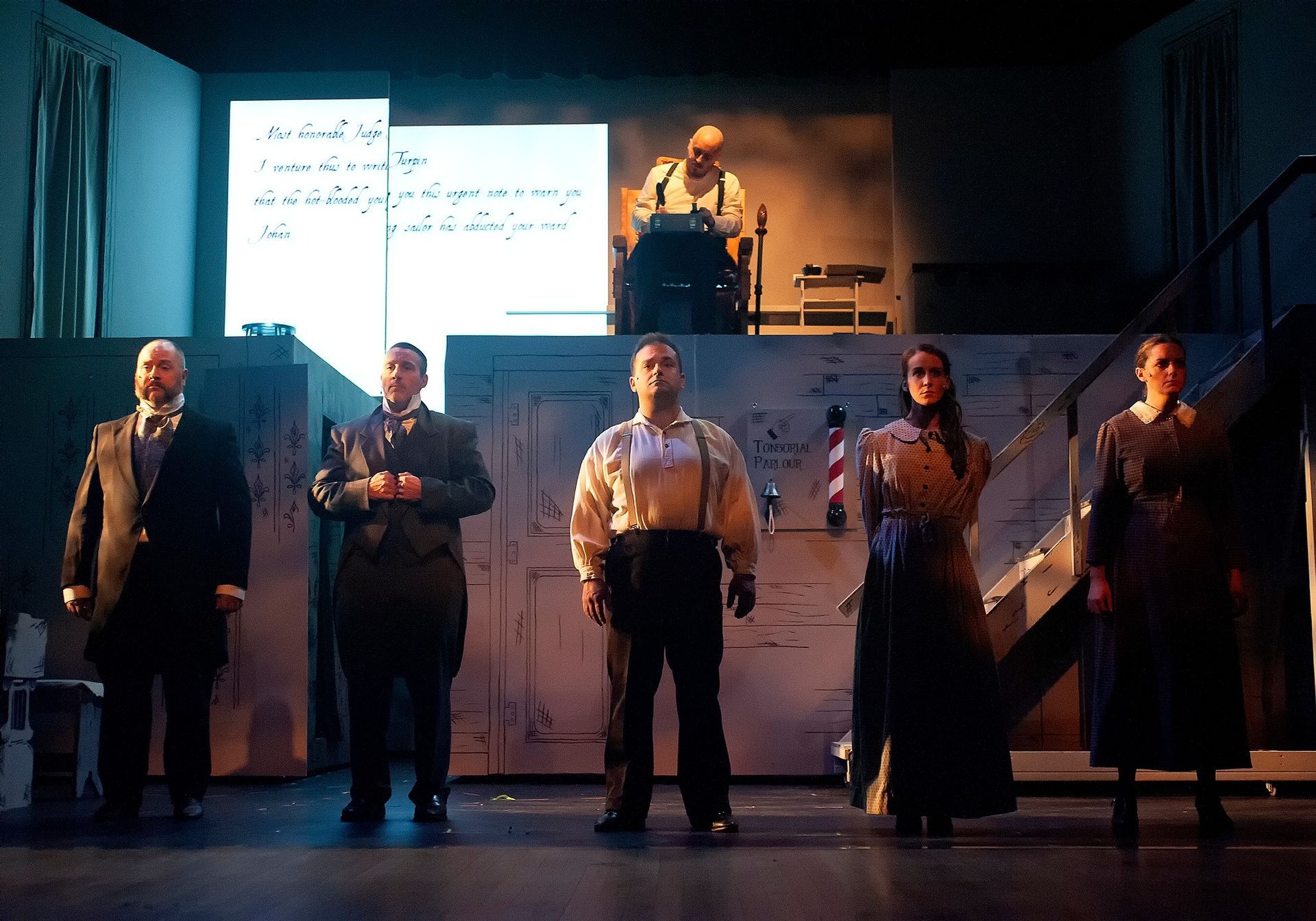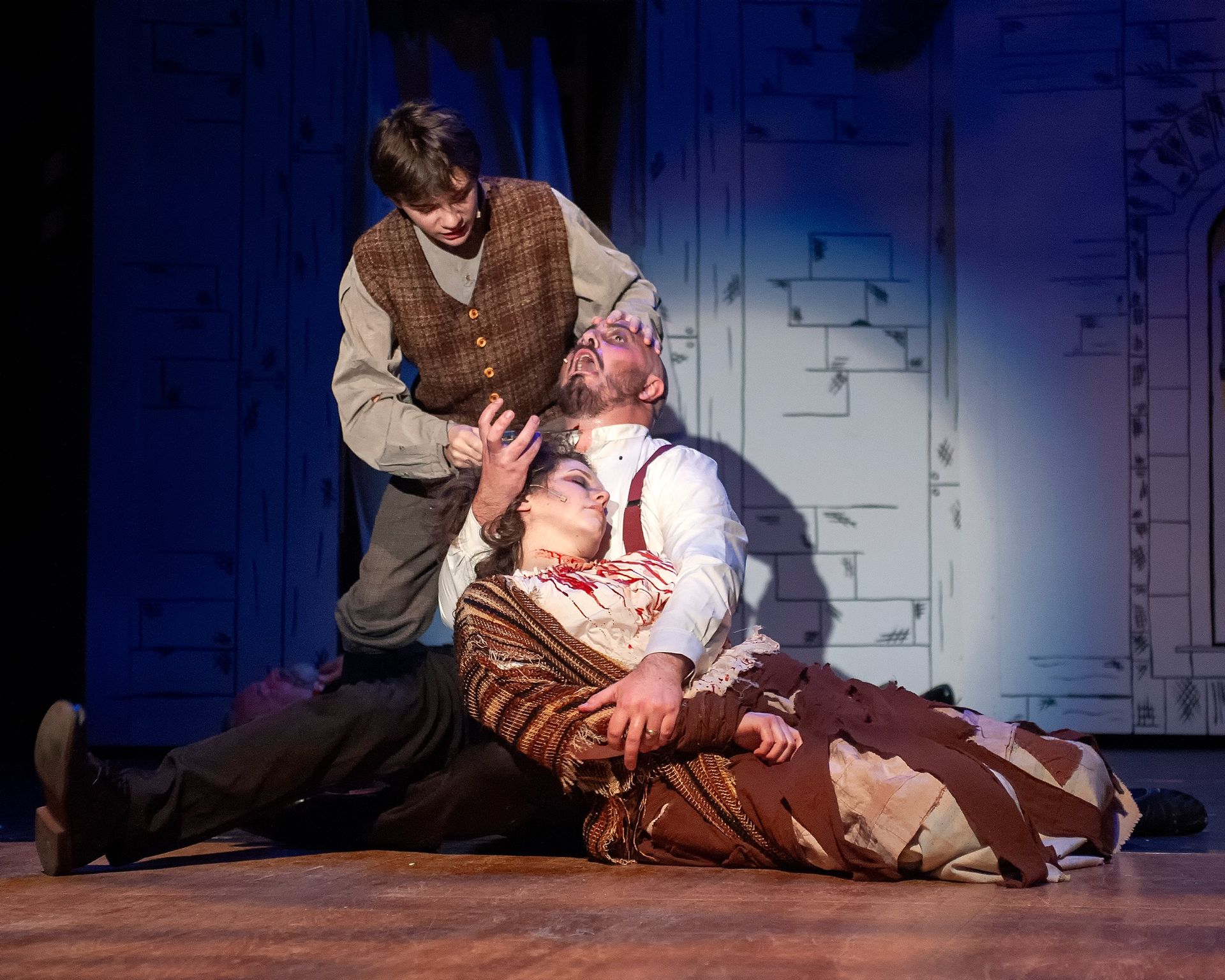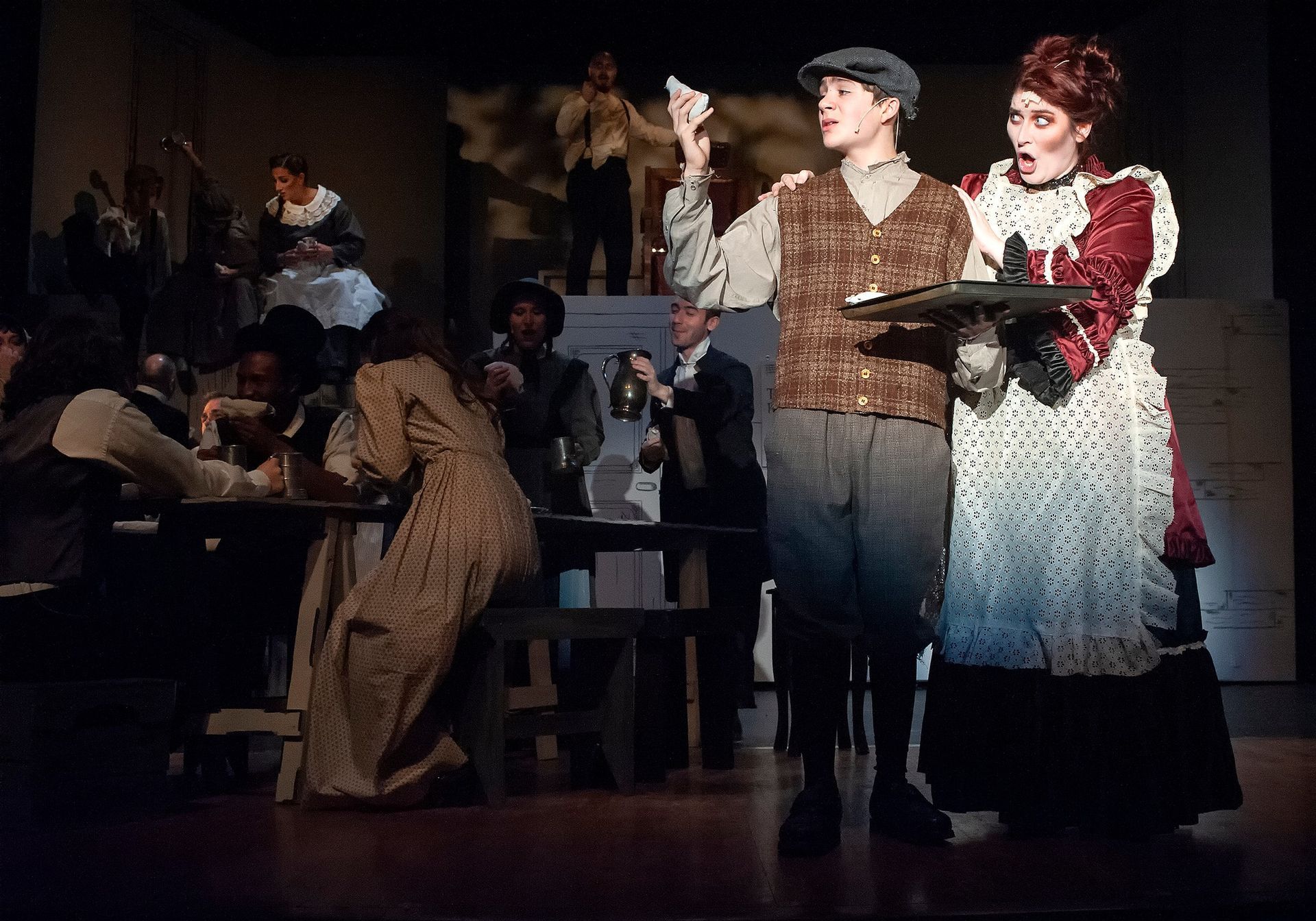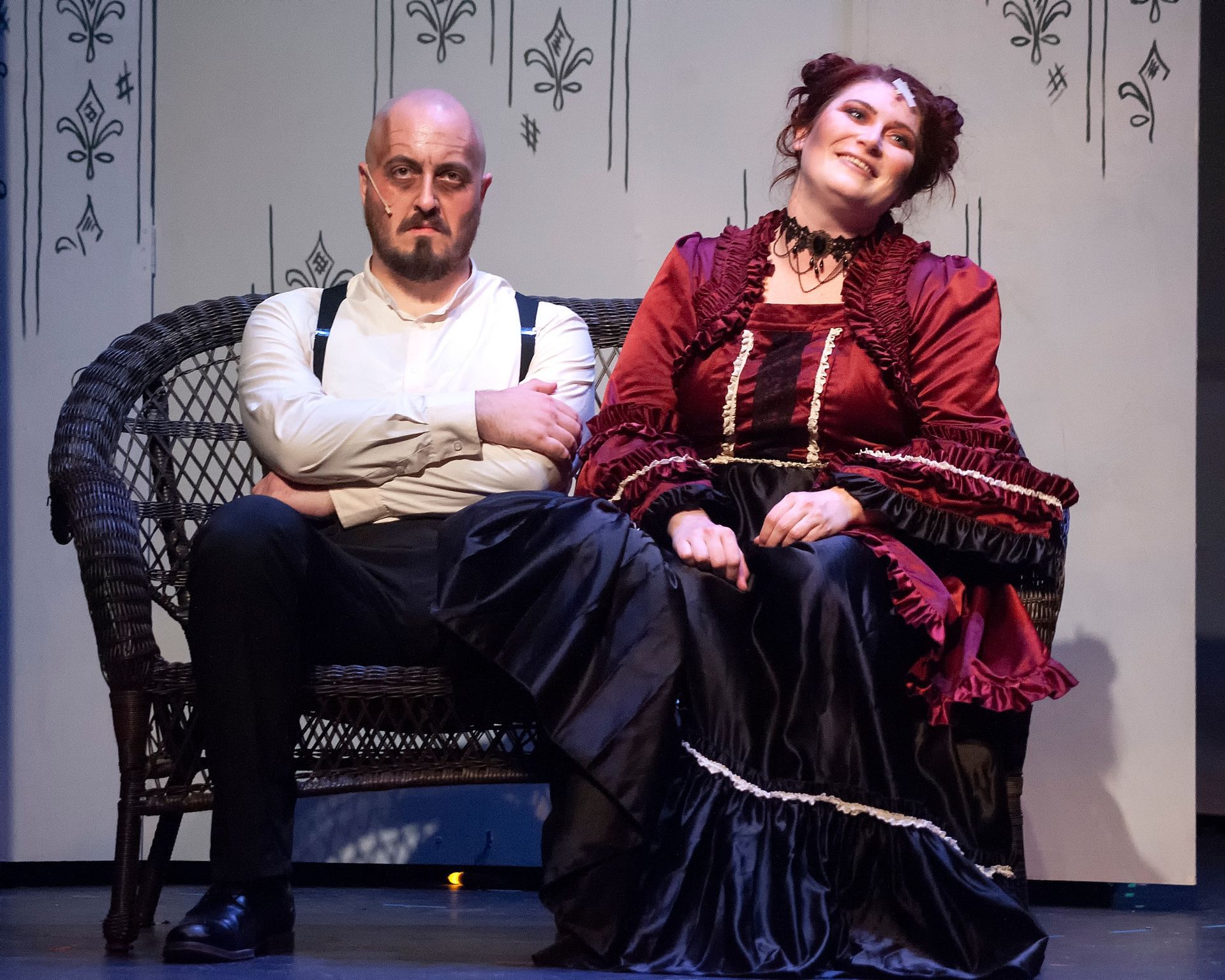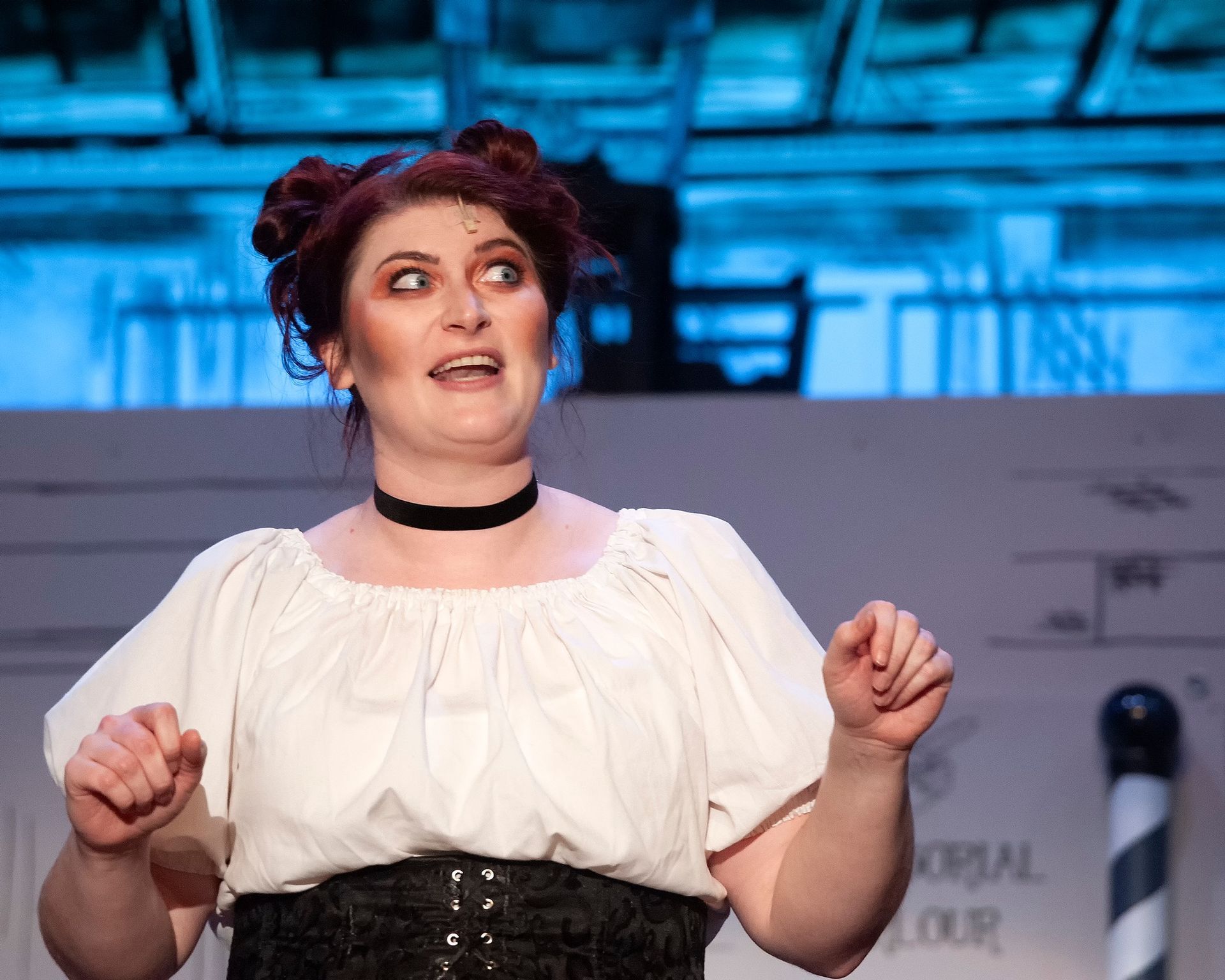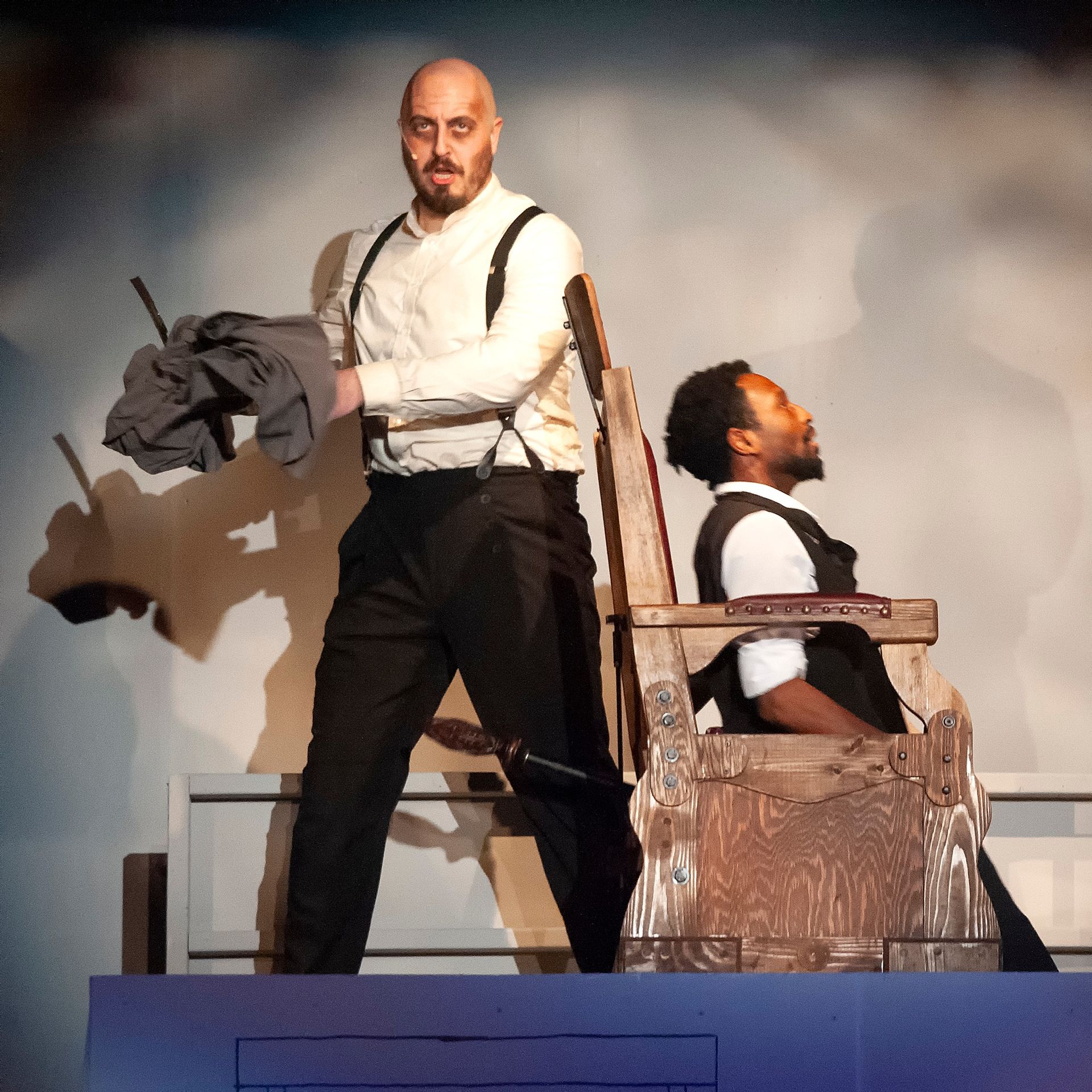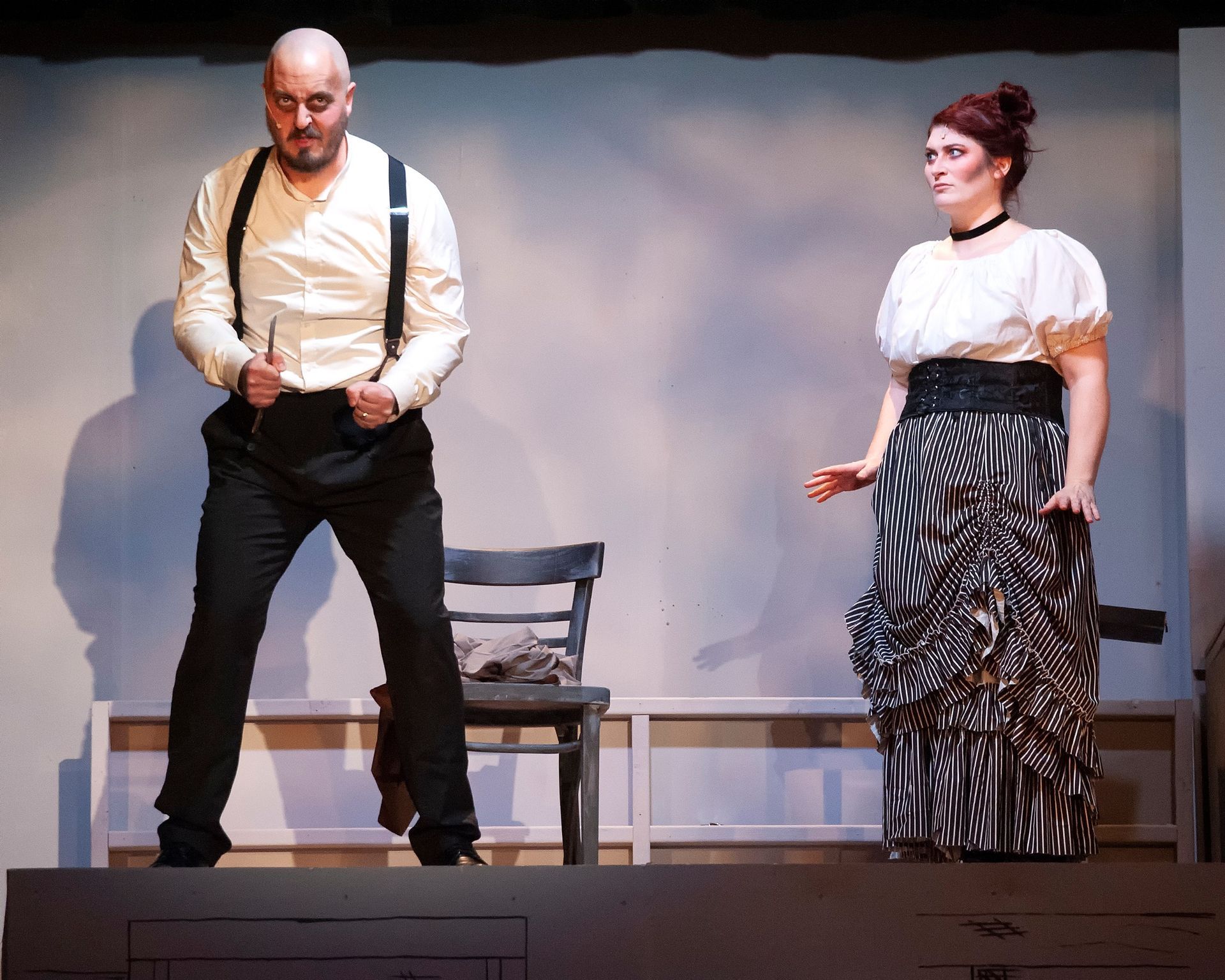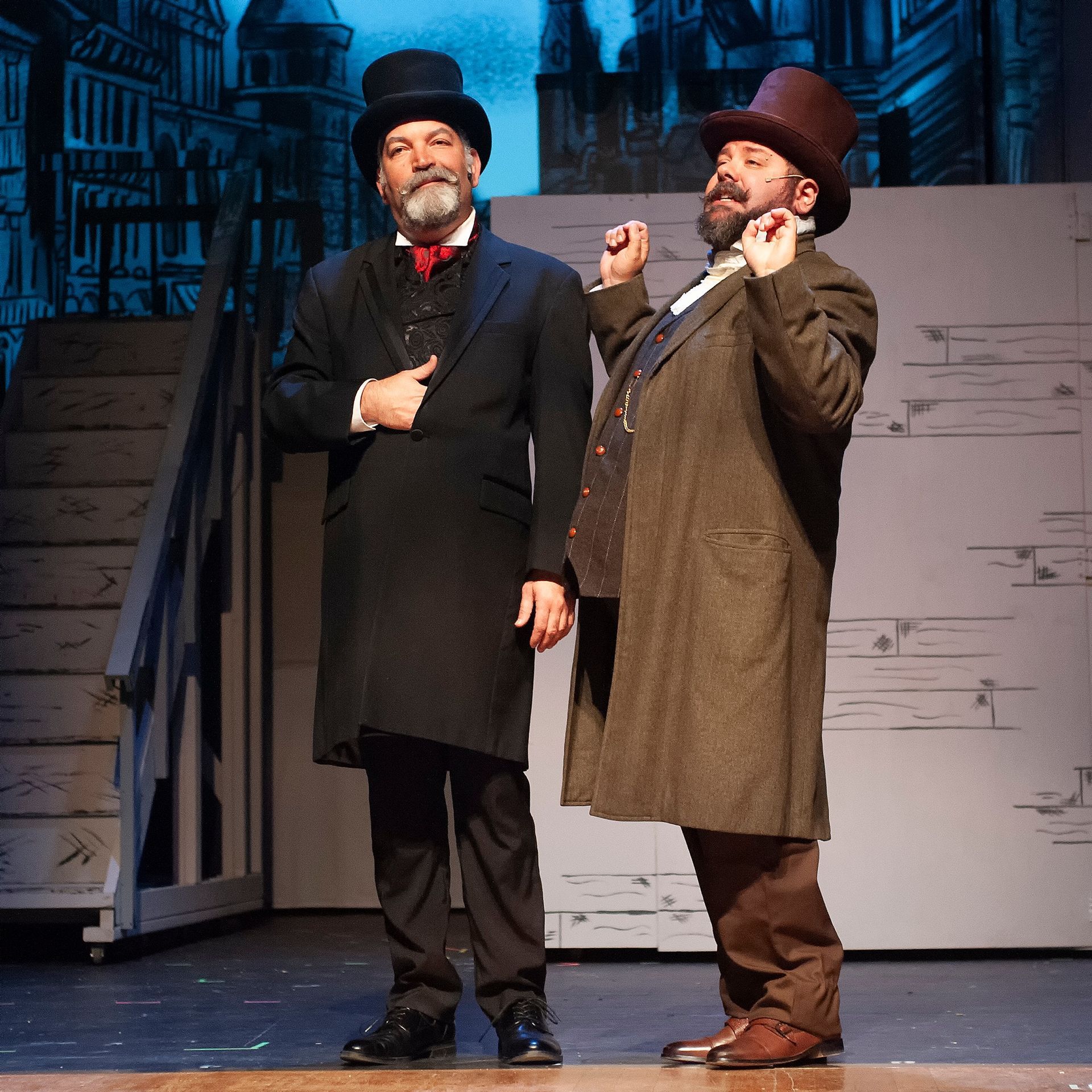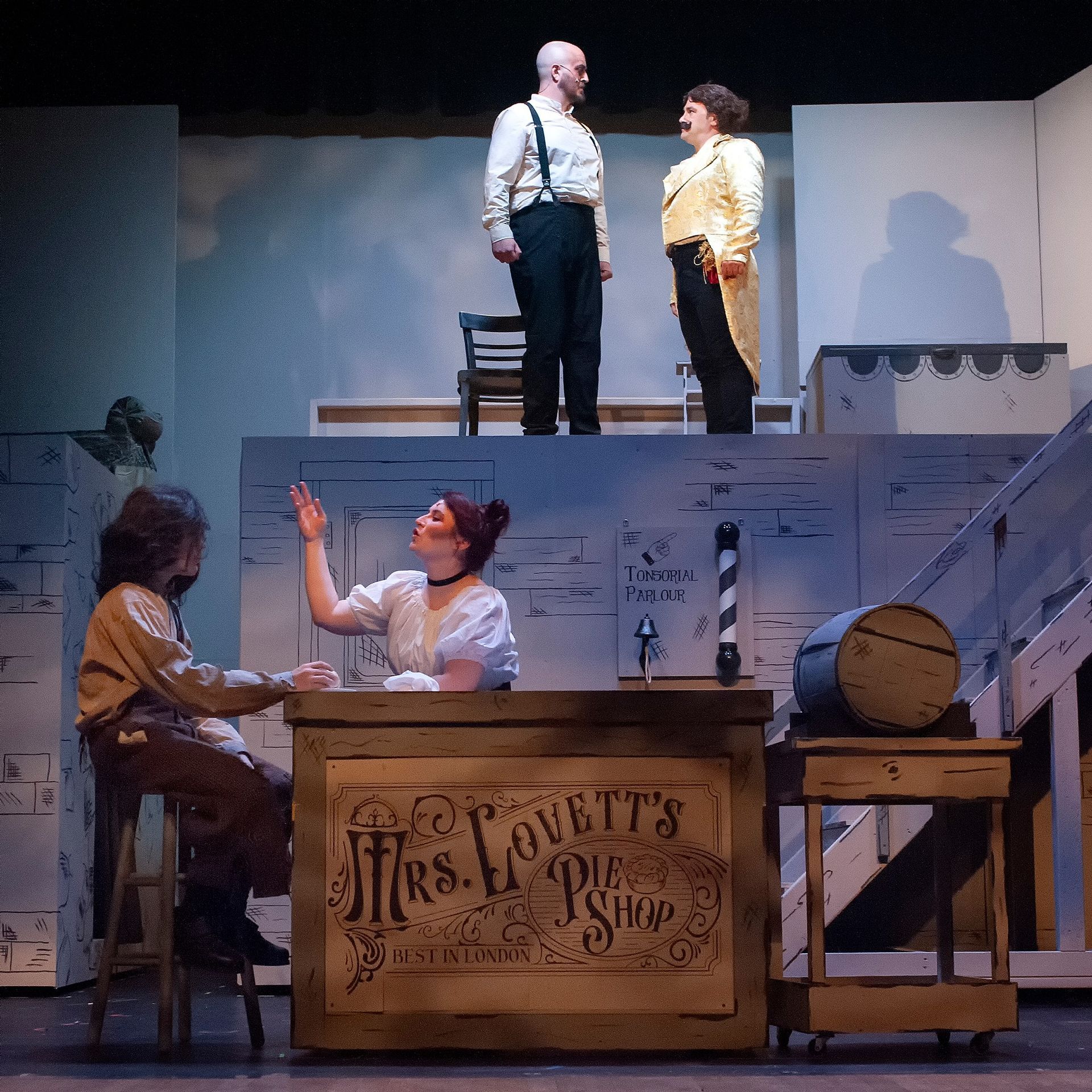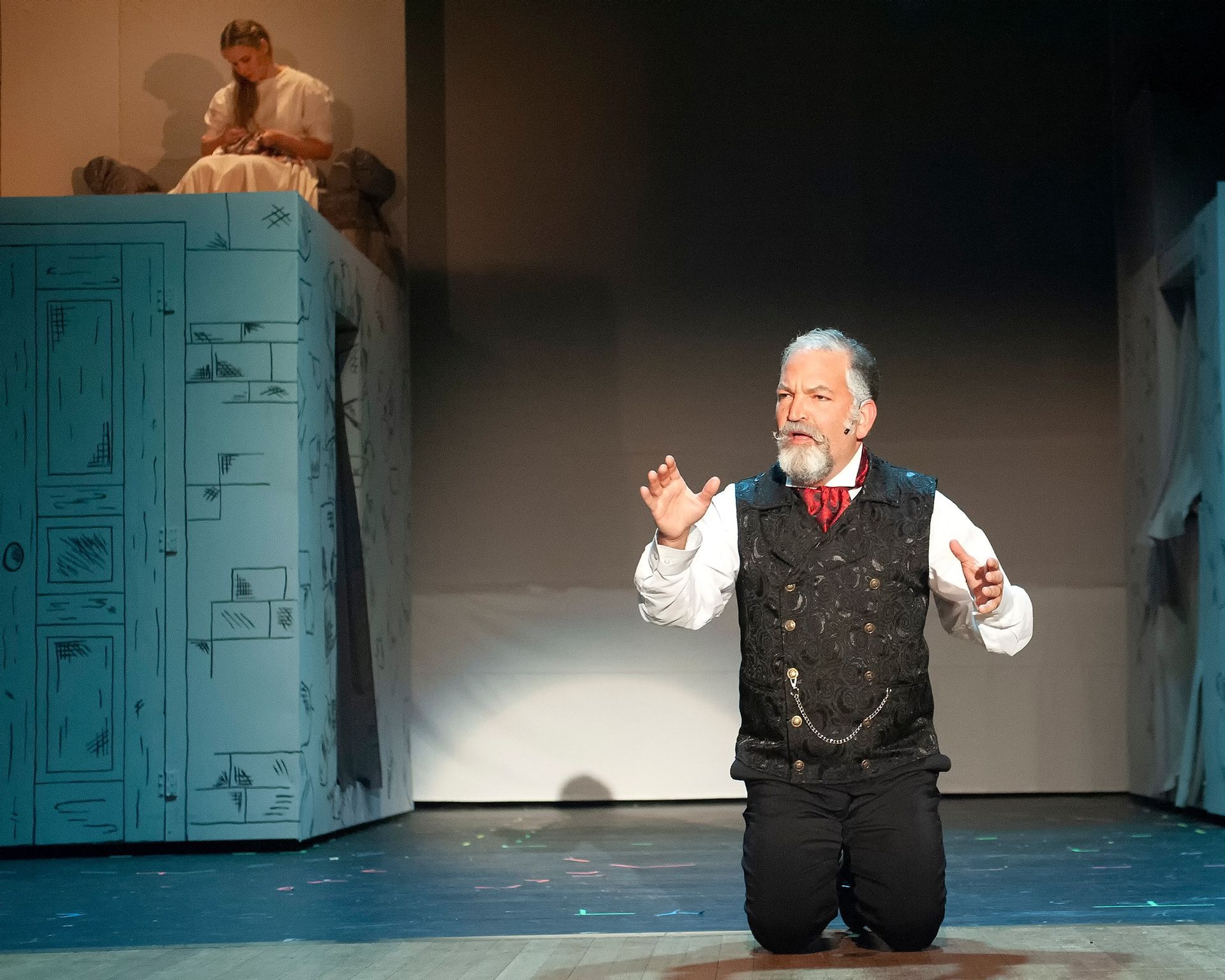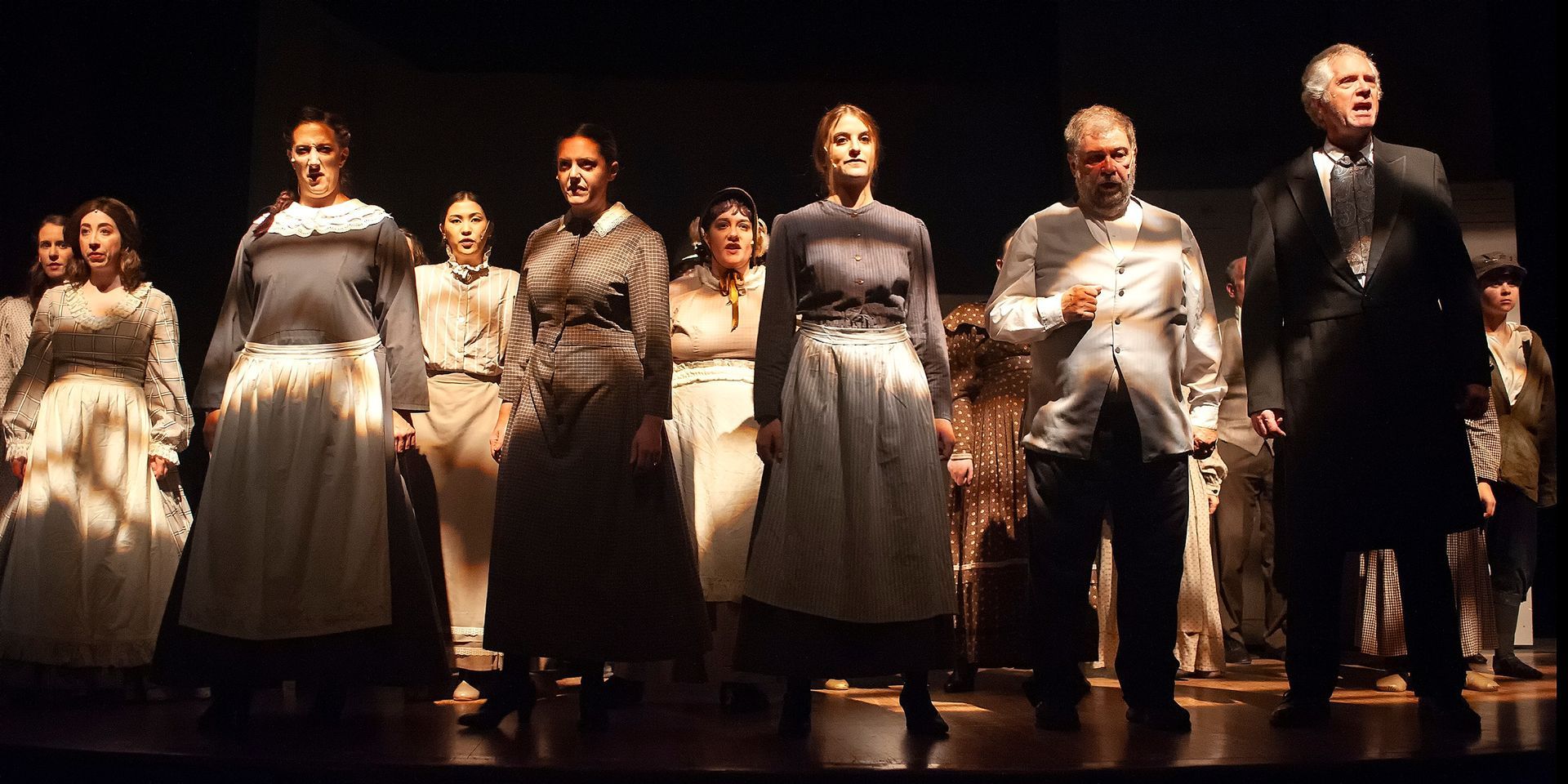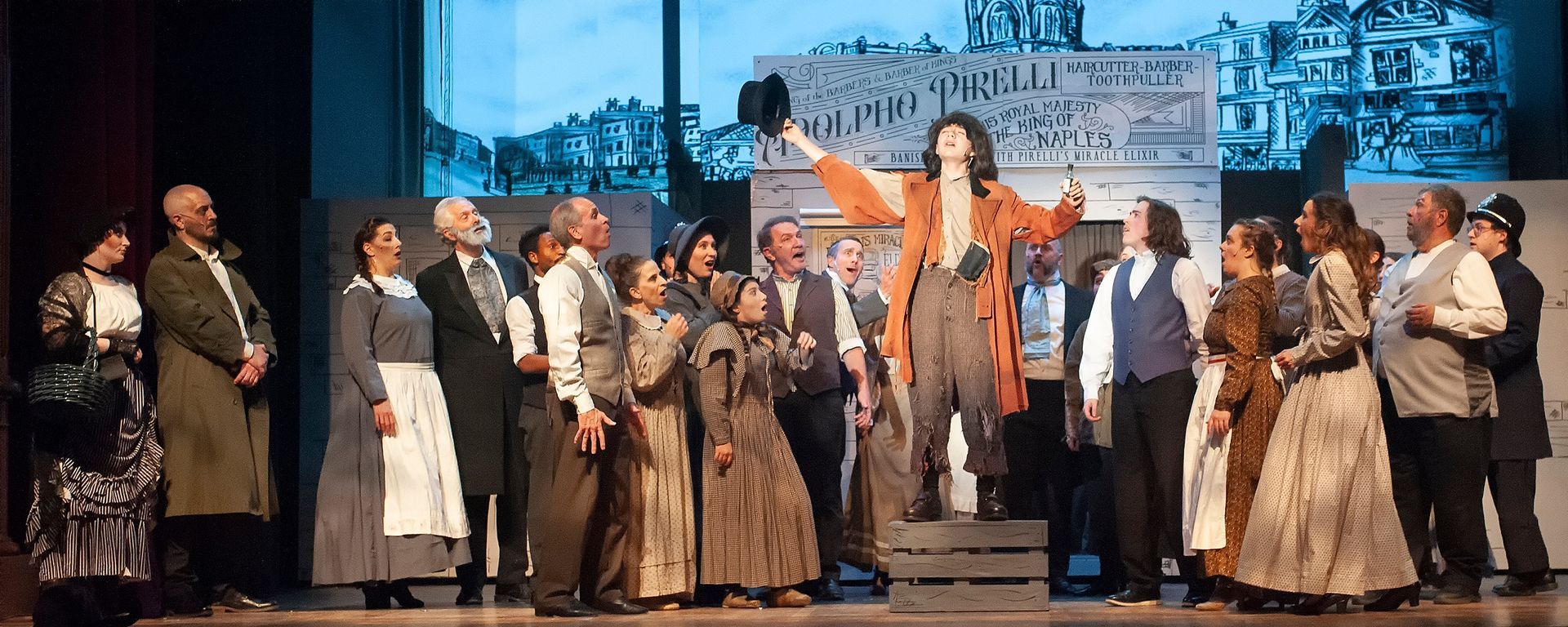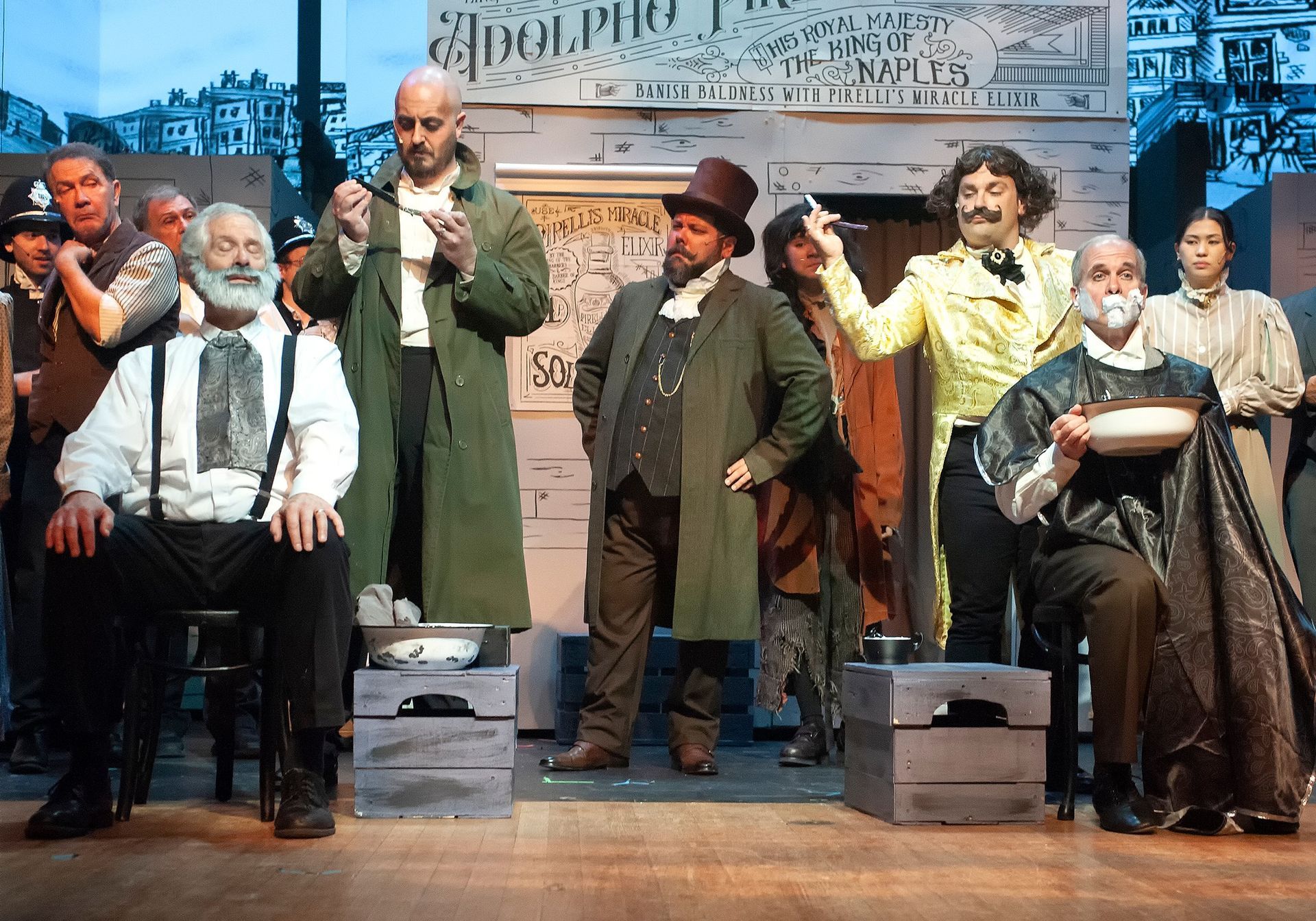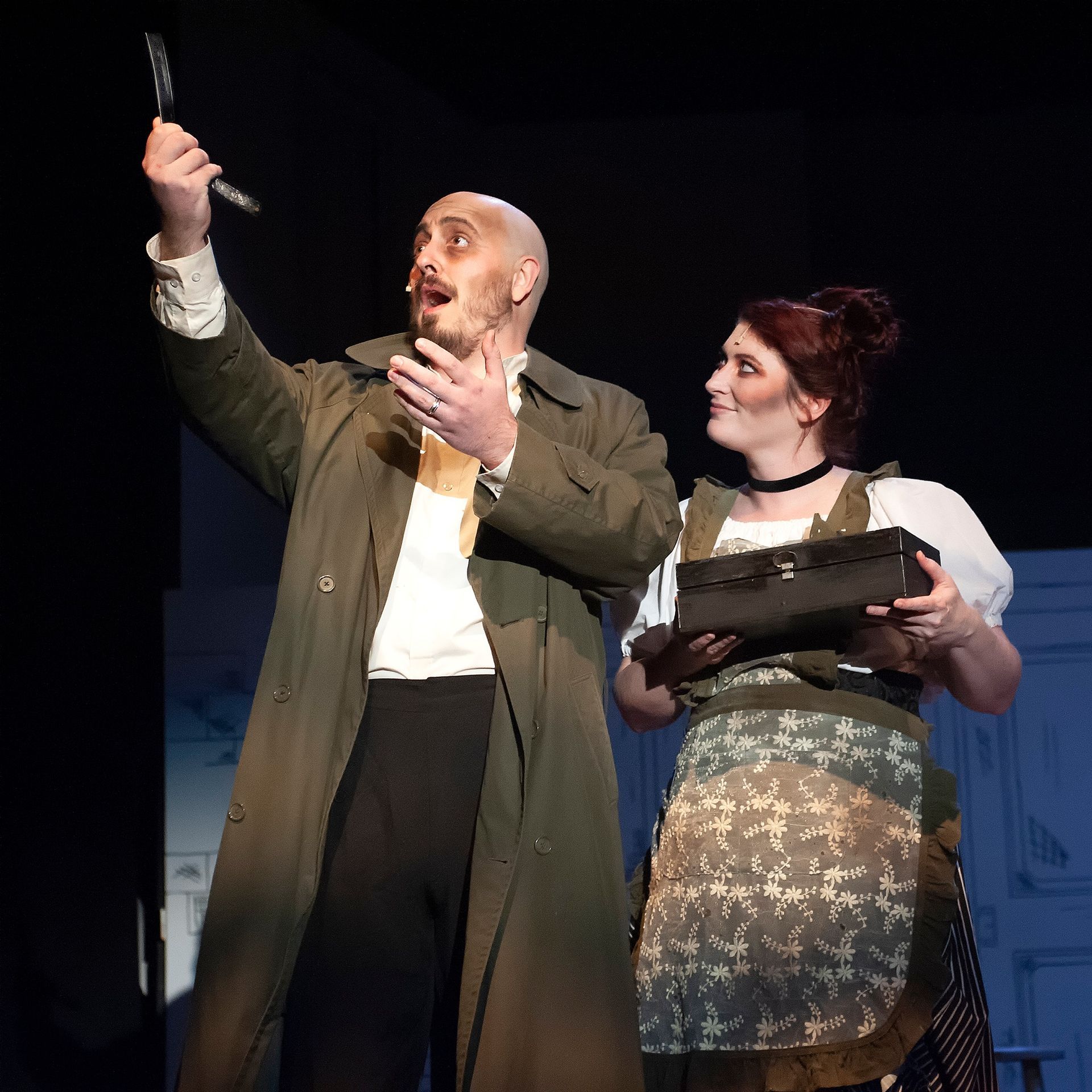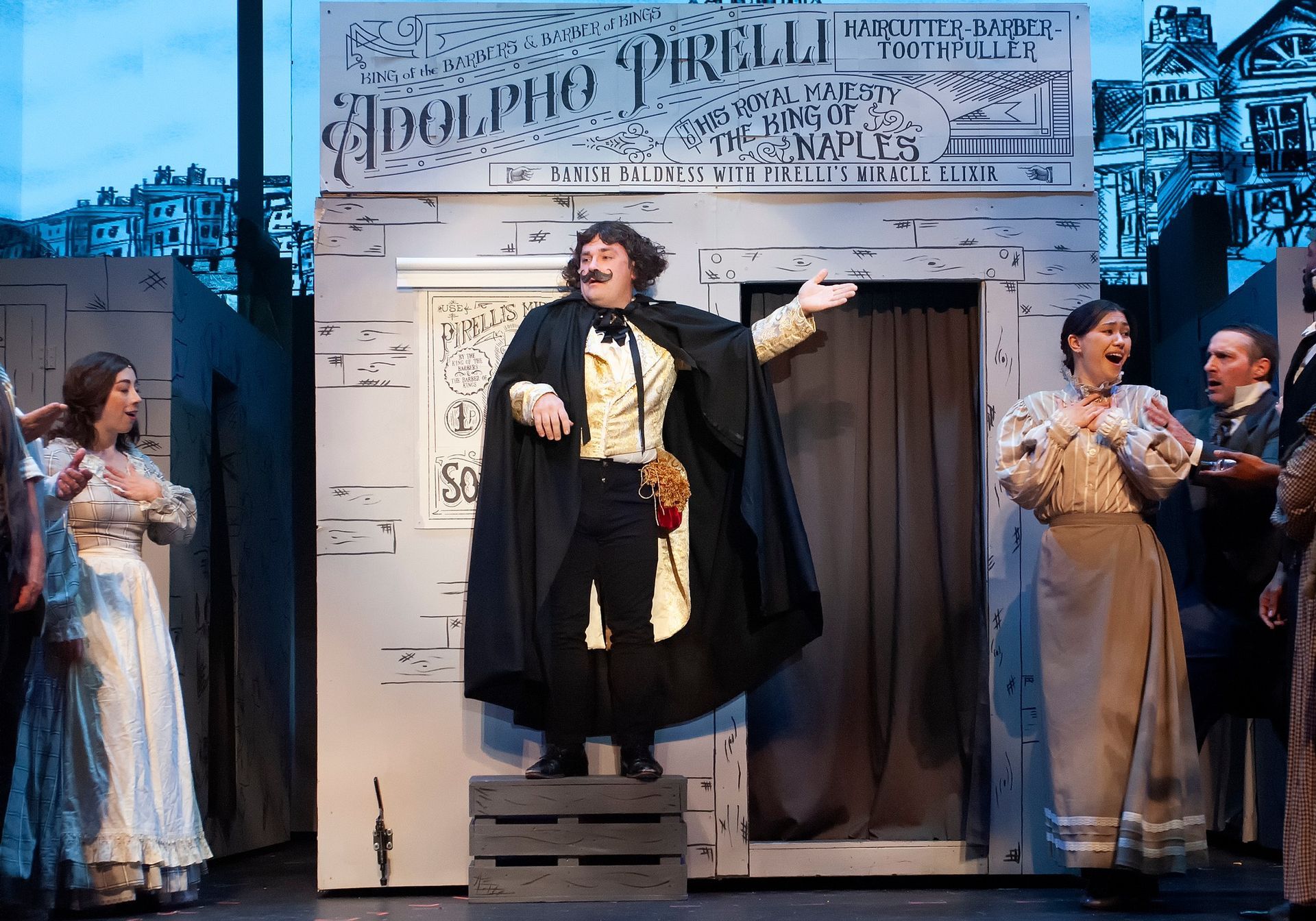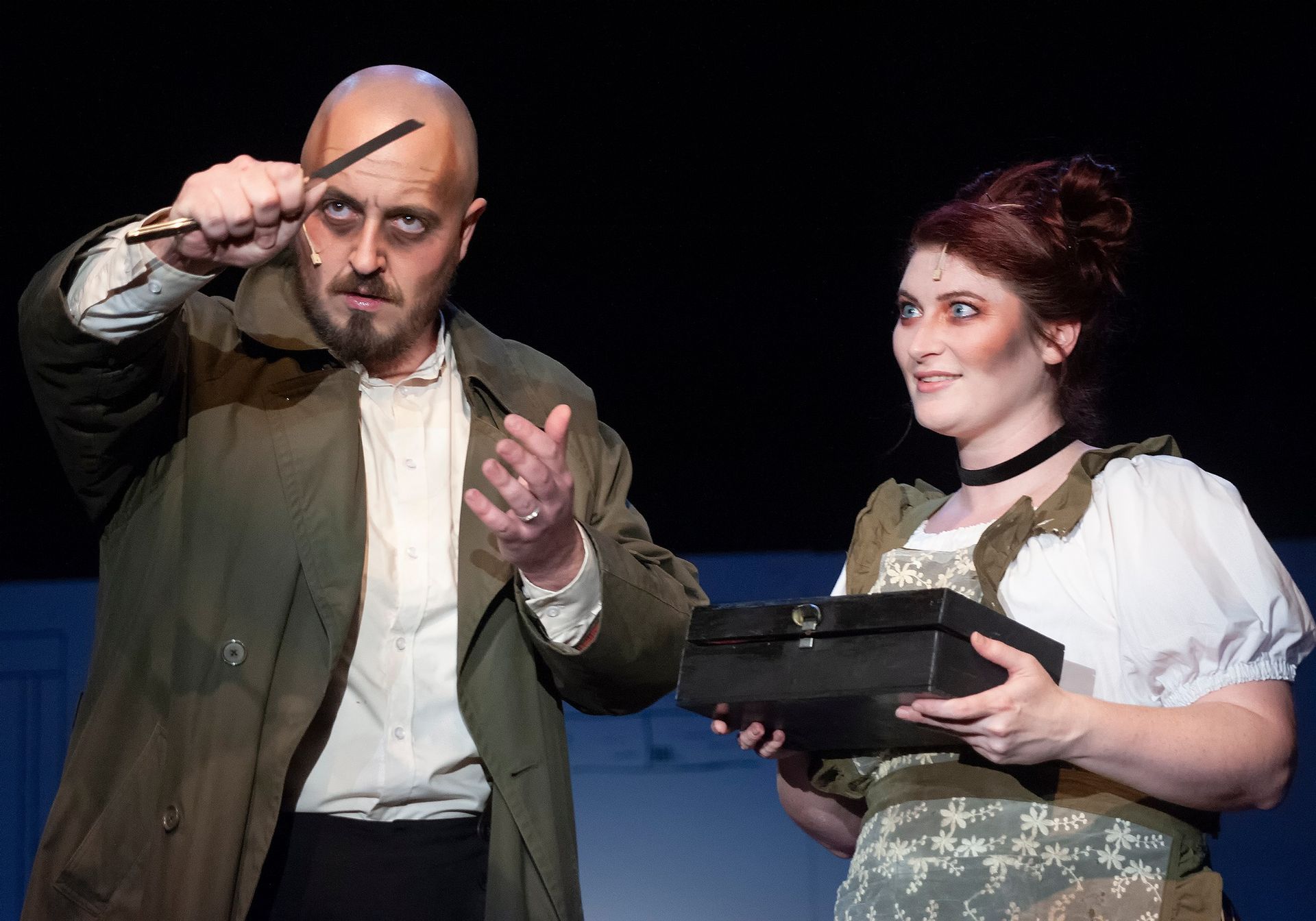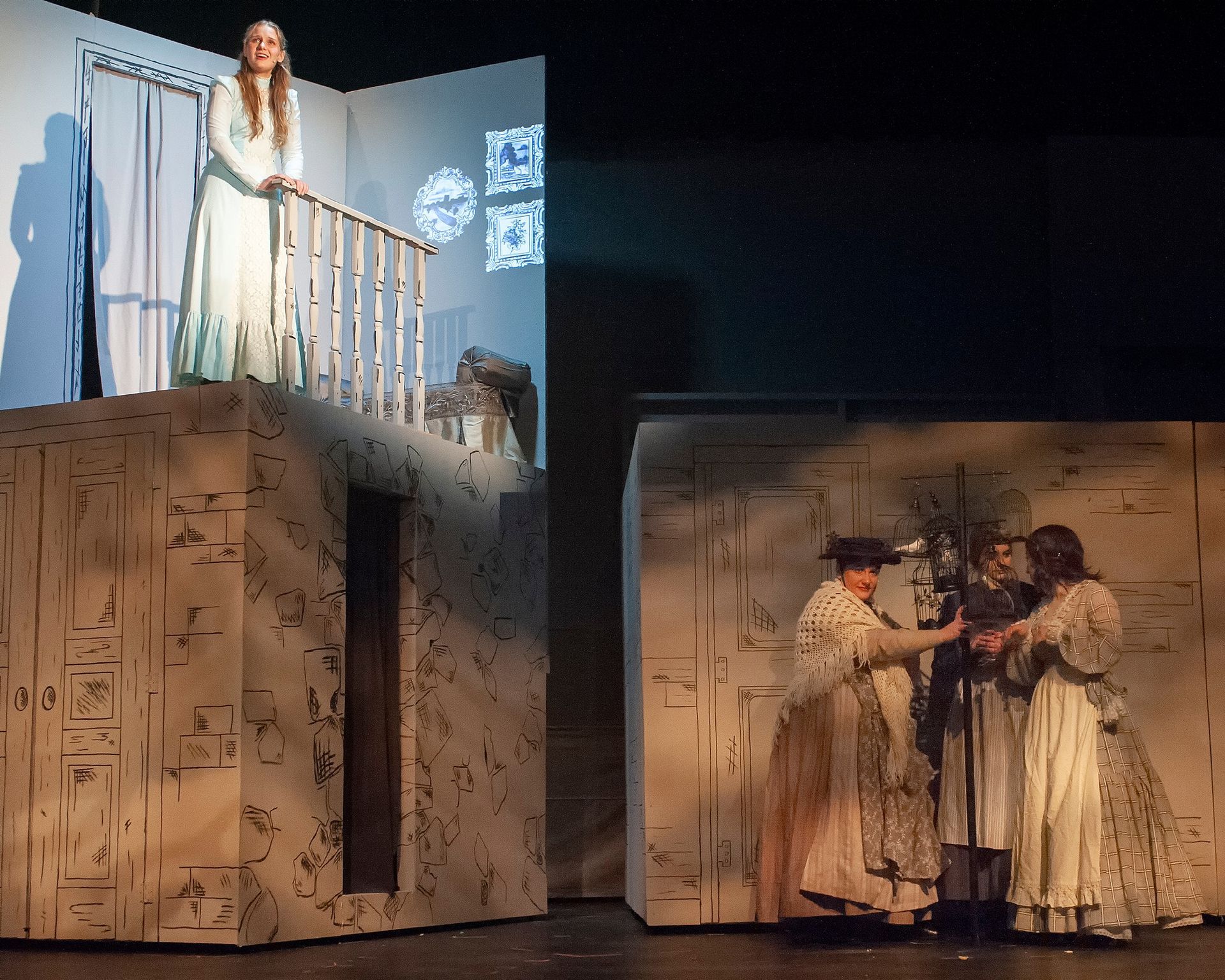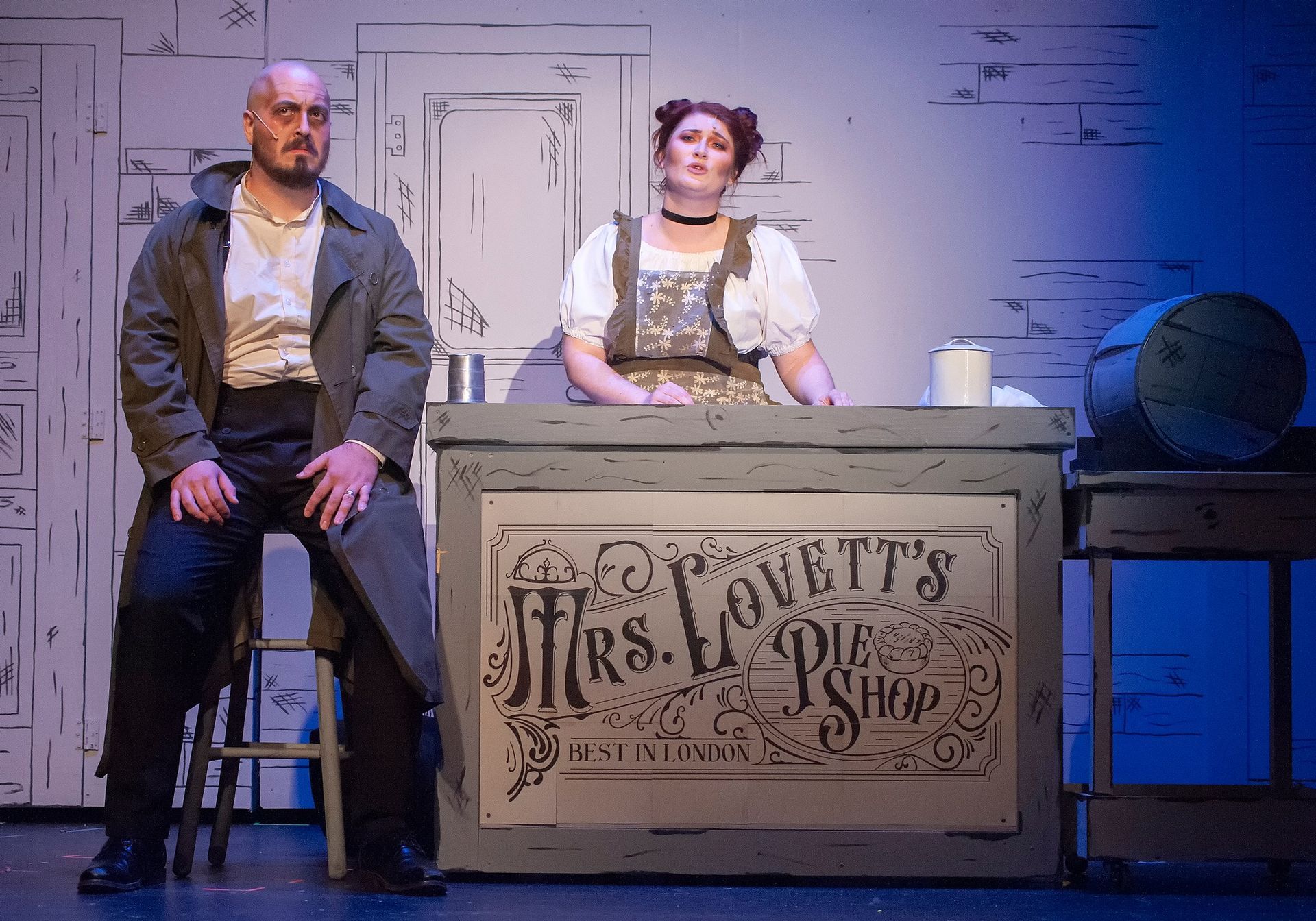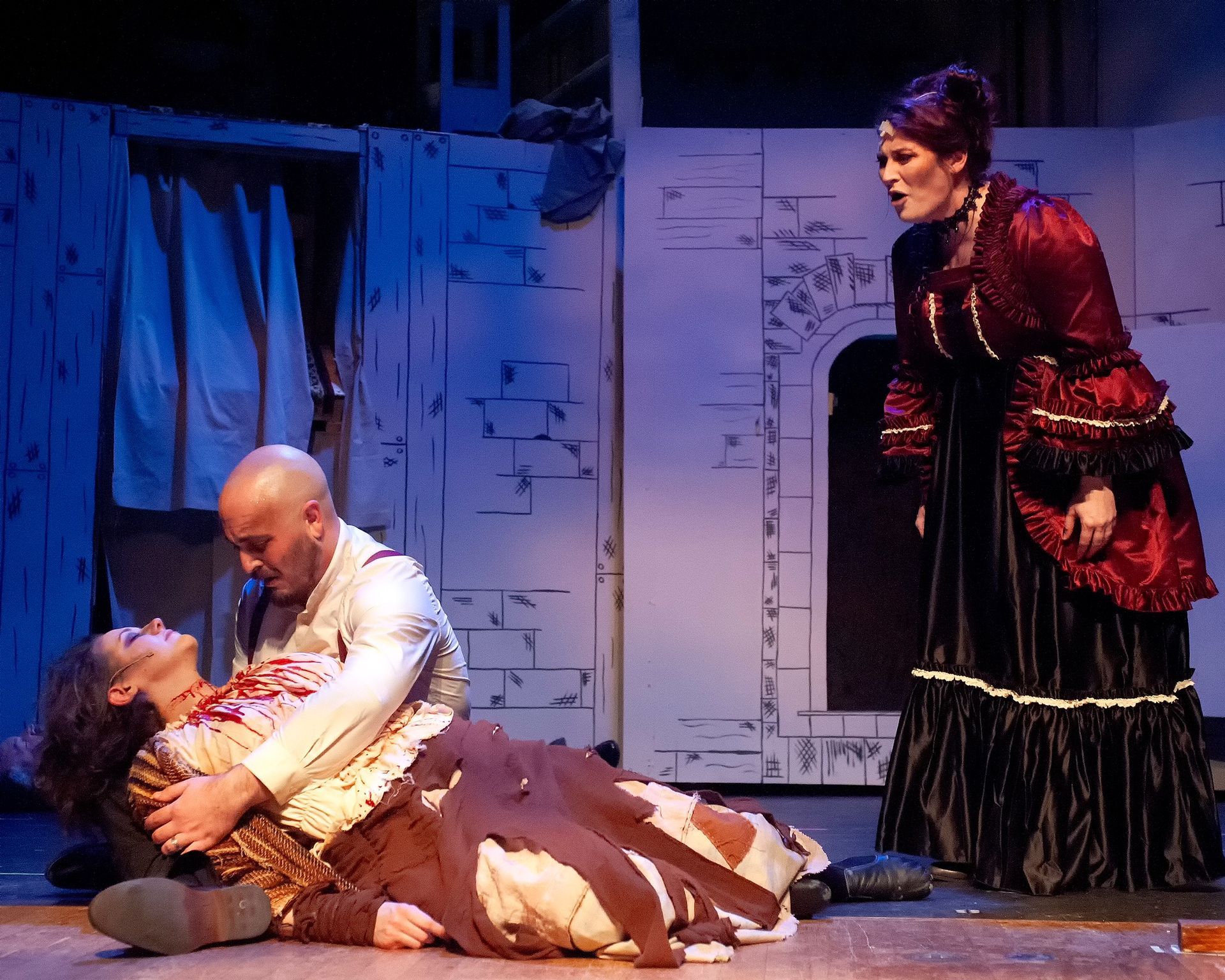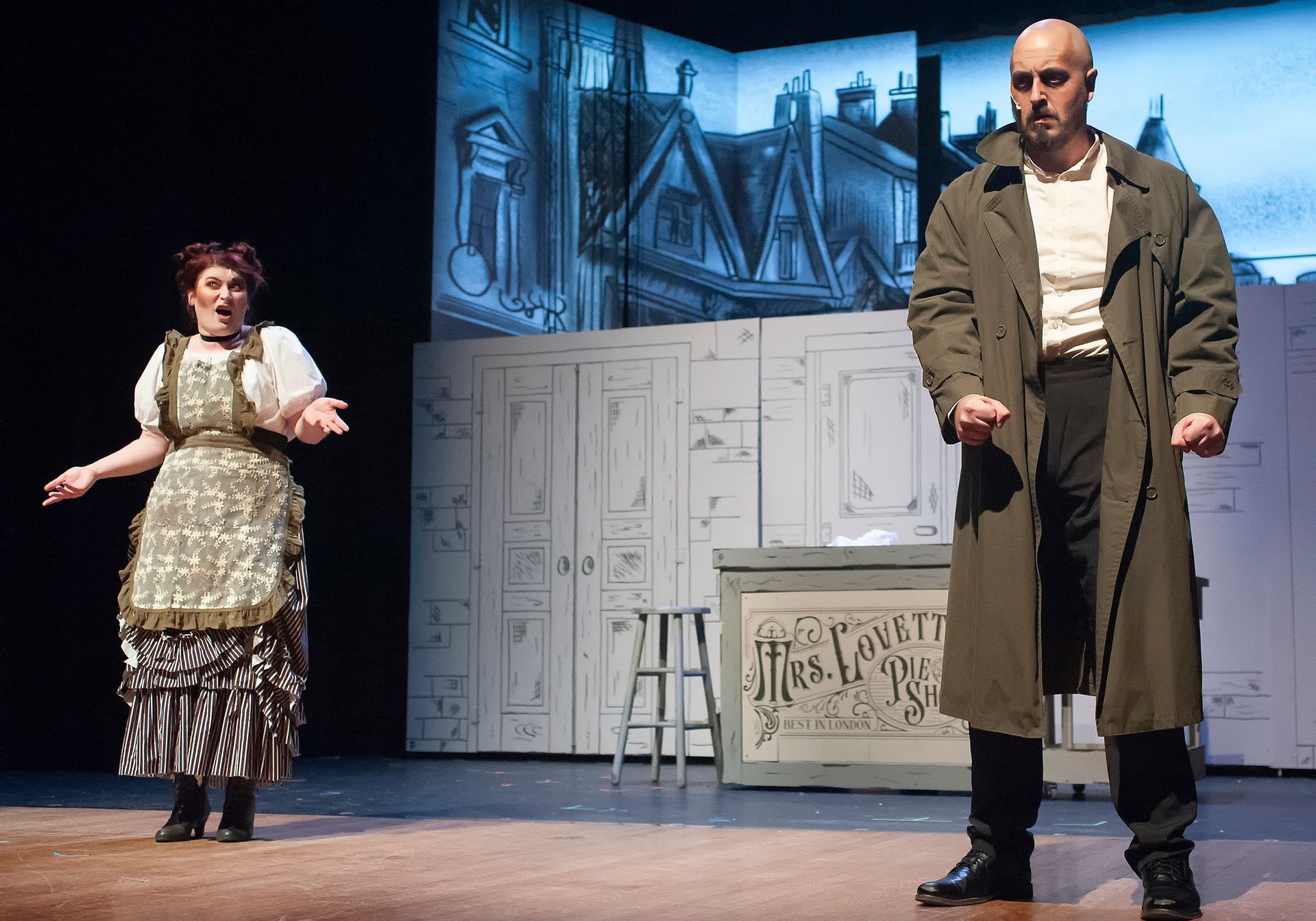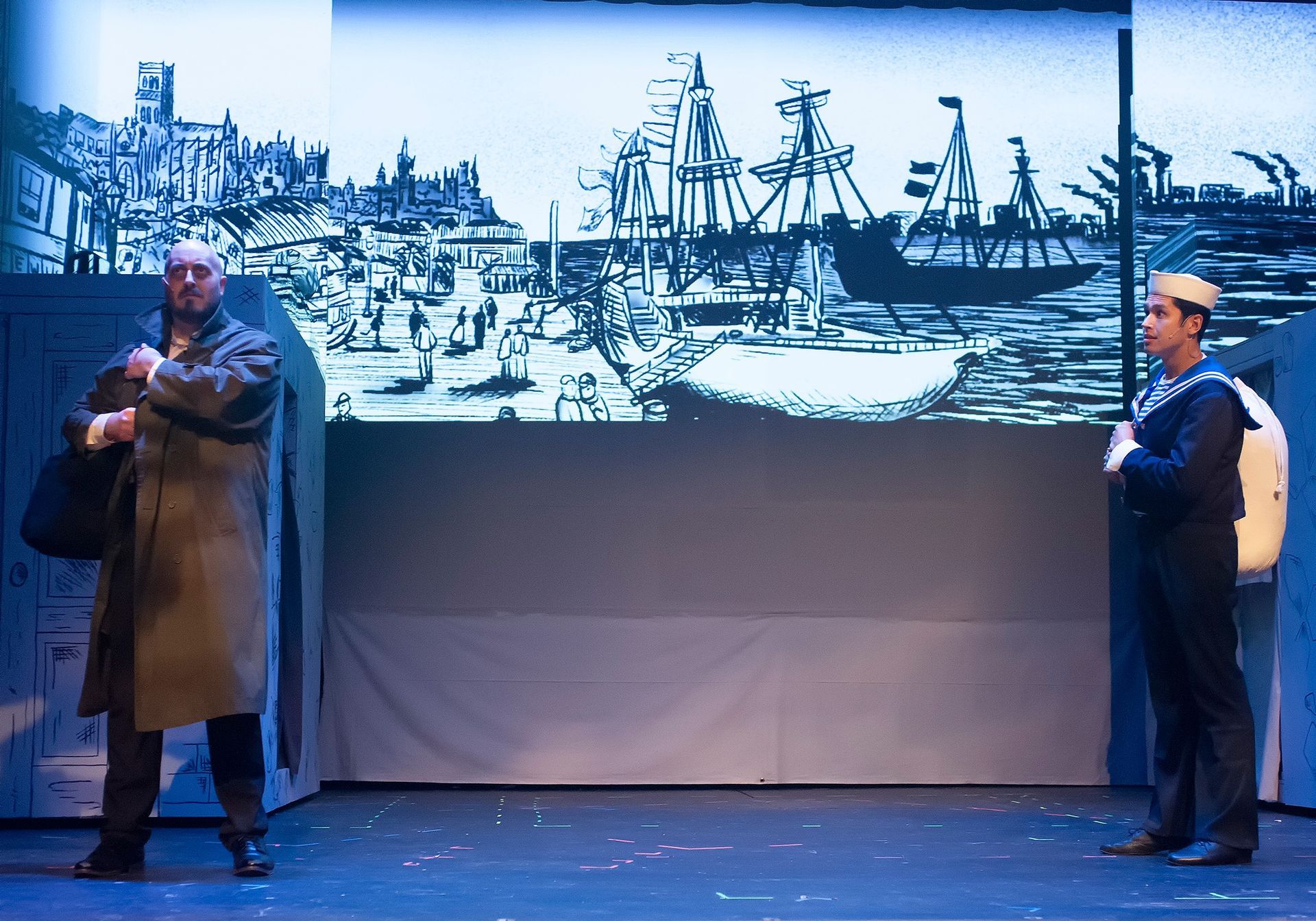Sweeney Todd
Choreography Style / Approach
My approach to Sweeney Todd centered on translating the director’s distinct vision into a physical language that supported the story’s dark rhythm and industrial pulse. The director had very specific visual and emotional intentions, so my first step was to fully understand and internalize that concept before connecting it to my own creative instincts.
From there, I focused on developing a continuous flow of movement that felt purposeful rather than ornamental. The goal was to keep movement grounded in the world of the show: mechanical, restrained, and driven by the characters’ internal tension.
The ensemble serve as storytellers, memories, and the players who “pass the ball” and show you where to look. Movement became an extension of the narrative’s rhythm (measured, haunting, and human) rather than a break from it.
Sweeney Todd
Venue / Company
Little Theatre of Manchester, CT
Year
2025
Role
Choreographer
Cast Description
31 Adult Performers, 3 Child Actors; Community Theatre
Choreographed Numbers
- Ballad of Sweeney Todd (Opening)
- Poor Thing
- God That’s Good
- 10B
- City on Fire
- Searching Part 1 and 2
- Ballad of Sweeney Todd (Finale)
- Multiple transitions and movement within the entirety of the show
Challenges / Innovations / Notable Moments
- Organized Chaos (City on Fire)
This number was wild to build in the best way. Each group had a base movement. From there, we assigned specific crossovers so actors darted through each other with purpose. It looked chaotic but stayed safe and full. No awkward gaps. - 24 Ensemble Members
This cast was huge for the size of the space. The set took up a lot of real estate and all three main pieces moved. The “set-ography” alone added a full layer of complexity. Tracking sheets became essential so the stage never felt still or crowded. No middle-school semicircles. - Layering
We built each scene by giving options. In “Poor Thing,” instead of a coordinated waltz, we created four set choices that looked like true freestyle at a masquerade ball. It gave the moment a lived-in feel even though every beat was locked. - Sondheim
So many words.
- Motifs
Sondheim repeats melodies and lyrics throughout the score, so we stayed consistent with visual motifs to help the audience process the story. This show is an operetta and the content moves fast, so repetition is a gift. Some of the visual callbacks included: - The slashing-of-the-throat gesture
- The ensemble pressing downstage as one unit to narrate the story
- The “Moralize” melt where everyone shows how the moment hits them
- The baking and barber handwork
- The Todd and Lovett waltz that appears at the end of Act I with hope and again at the end with rage
- The company front that swings open to stand behind Todd at the top and finish of the show
- Dynamic Dance/Movement:
One of the requests of the Director was to avoid the “modern dance” take on movement. I think we ended up in a really nice place, where movement was more than just constant tableau, but also included visual interest that helped propel the story. This, however, required even more execution from the company. For example, “City on Fire” looks simple on paper but requires actors to execute it with their full bodies. The foundation of movement is taught first, then everyone has to do it together…but ultimately they have to shift into the frantic, escaped-from-the-asylum version. It asks for performance beyond “I can do the steps at the right time.” They did a phenomenal job!
Show Gallery
Photos by Little Theatre of Manchester
con·tact
